I love a good state museum like the Idaho State Museum. (See also Texas’s and South Carolina’s. Most states have one, though let’s all give Georgia some side-eye.) It’s really a joy when a state can distill what they’re proud of in one experience for visitors. And Idaho has put together a visually beautiful and engaging display over three floors.
The Idaho State Museum is conveniently located in downtown Boise, in the beautiful Julia Davis Park. The Boise Art Museum is right next door, the Idaho Black History Museum is tucked behind, and Zoo Boise is just down the path. You can make a day out of all four attractions if you hustle. The Black History Museum and the Art Museum are both small, and the Zoo isn’t very large either. Just make sure you avoid the free 40-minute guided tour of the Idaho State Museum. In my experience, it didn’t add anything to my visit and you can cruise through faster on your own. Even so, plan for around 2 hours to visit.
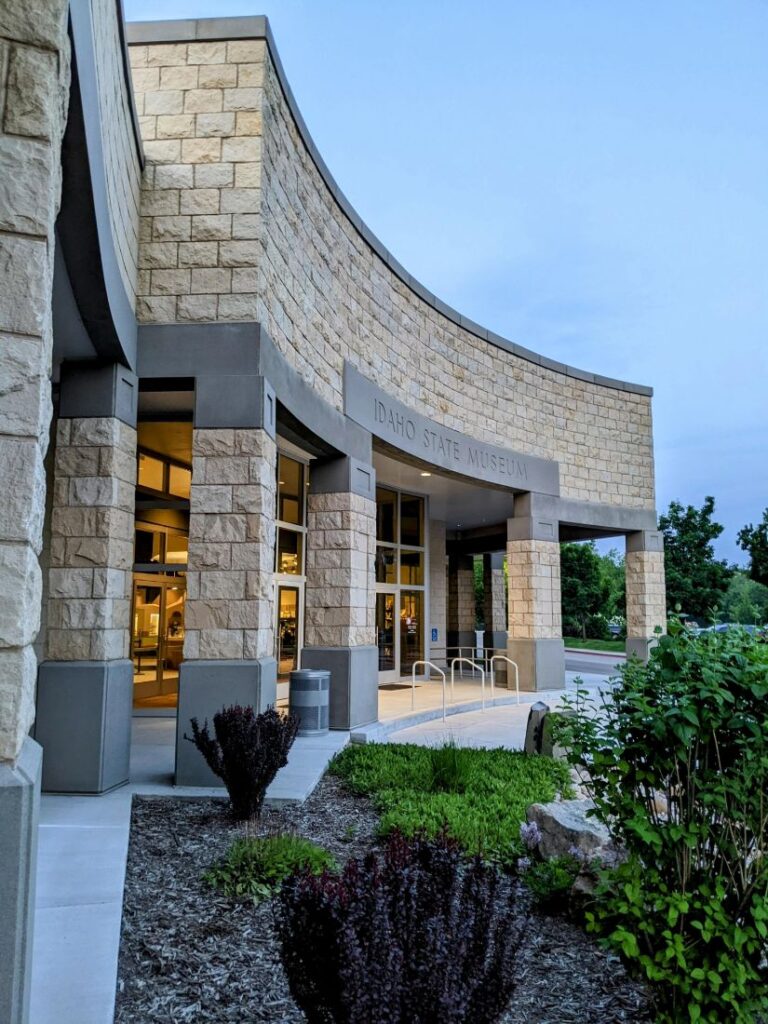
Idaho State Museum
Let’s start at the entrance. I’m not sure if the inner facade is from some older building entrance, but it kinda looks like it! That’s straight ahead and serves as the main staircase. To your right is a large gift shop perfect for any Idaho-specific souvenir shopping.
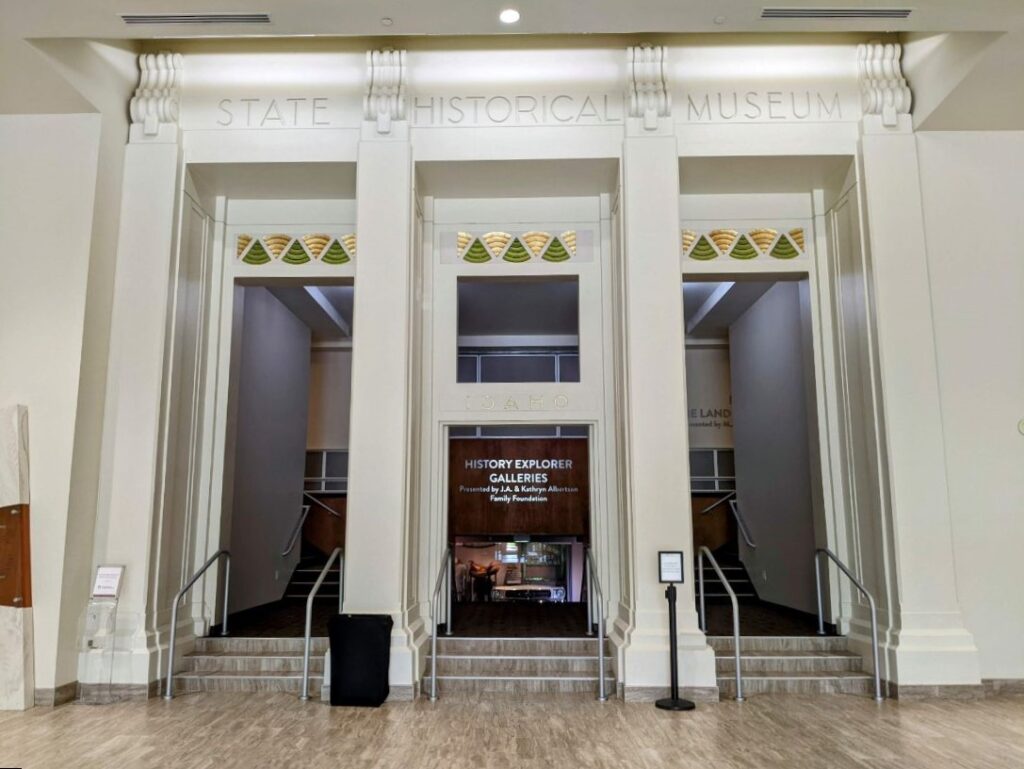
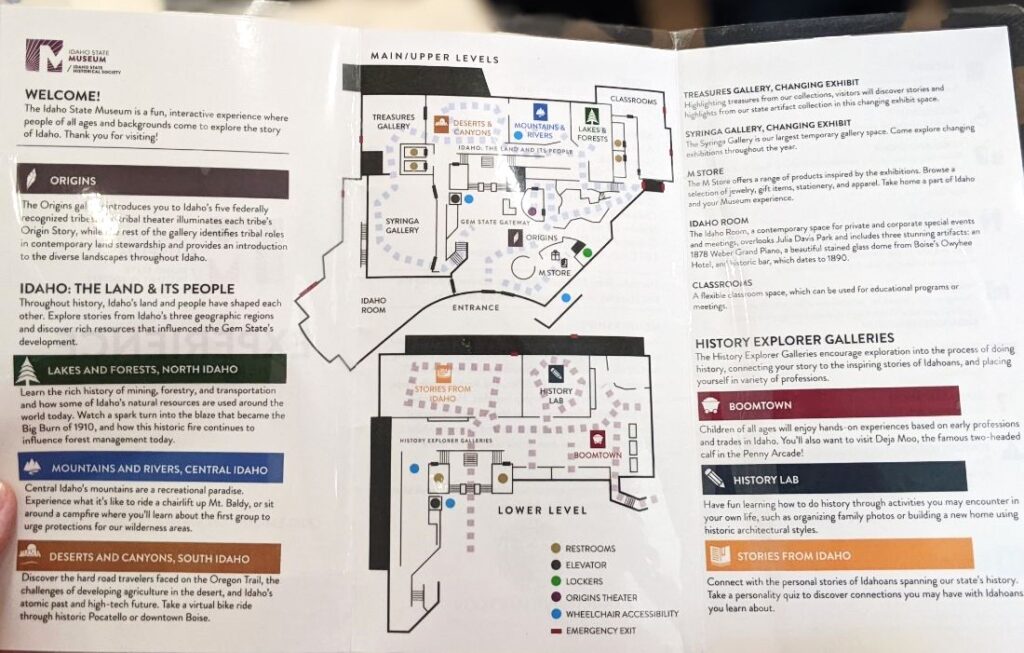
Idaho Origins
Buy your tickets in the gift shop and continue to the right into the Idaho Origins section. This area deals with the geological formation of Idaho and nature and wildlife. There’s a digital stream you can play with, and a large projection-mapped wall showing scenes from all over Idaho that you can view from two levels.
In a small room to one side is a theater that plays animated Native American folk tales that are well worth listening to.
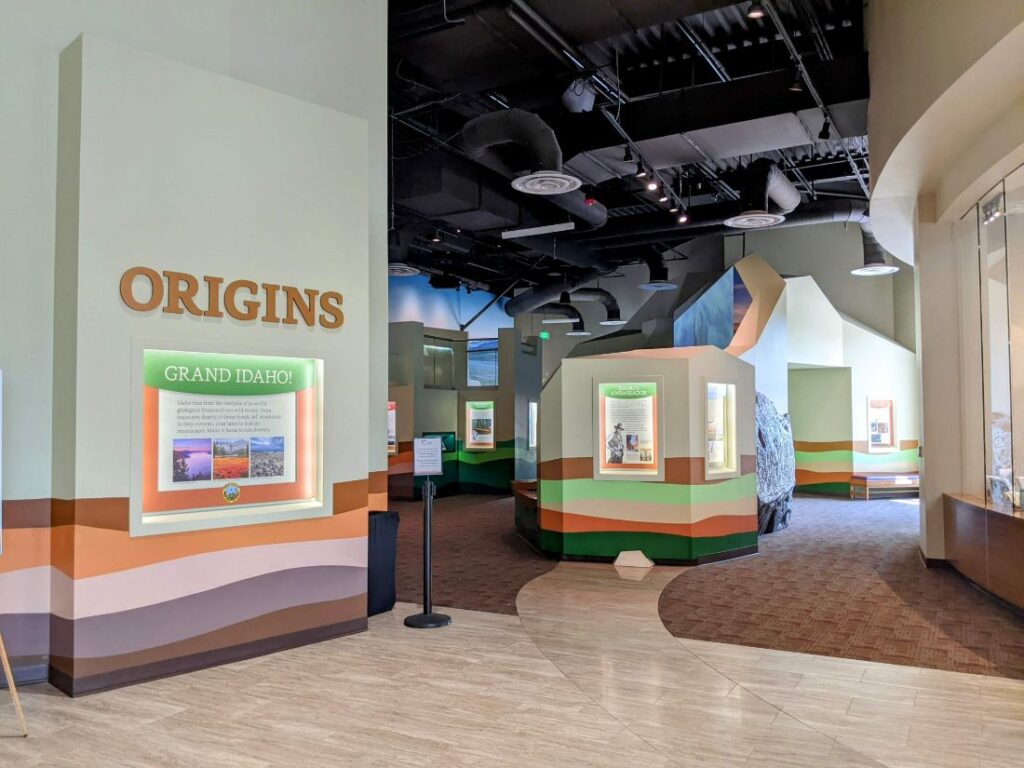
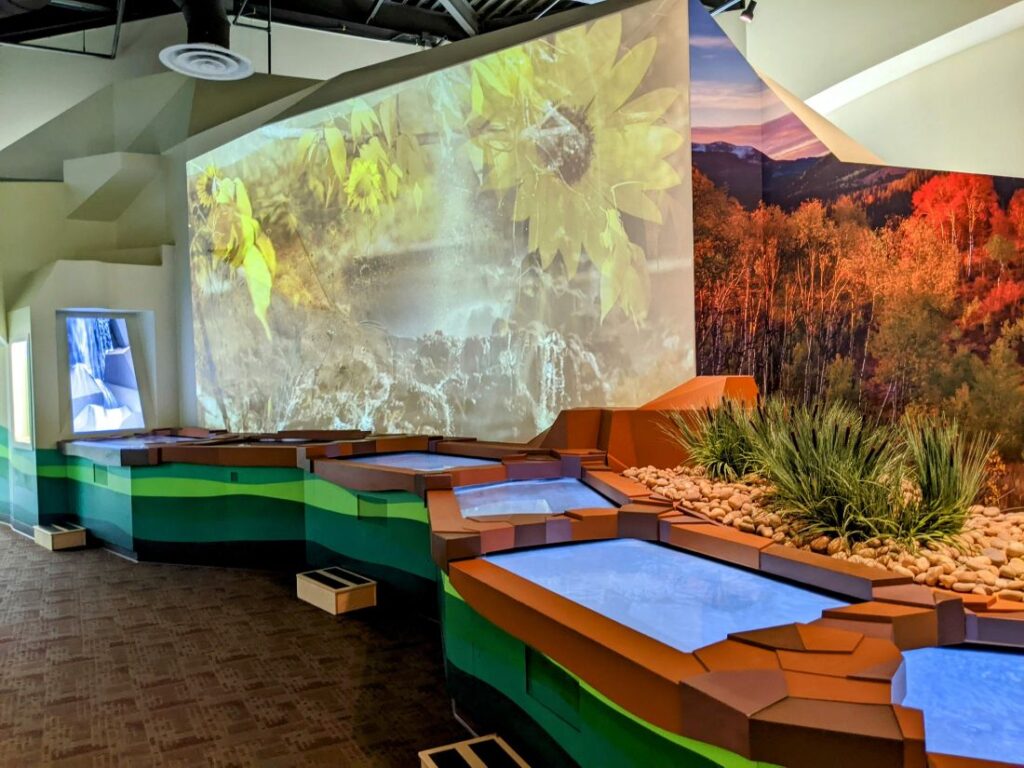
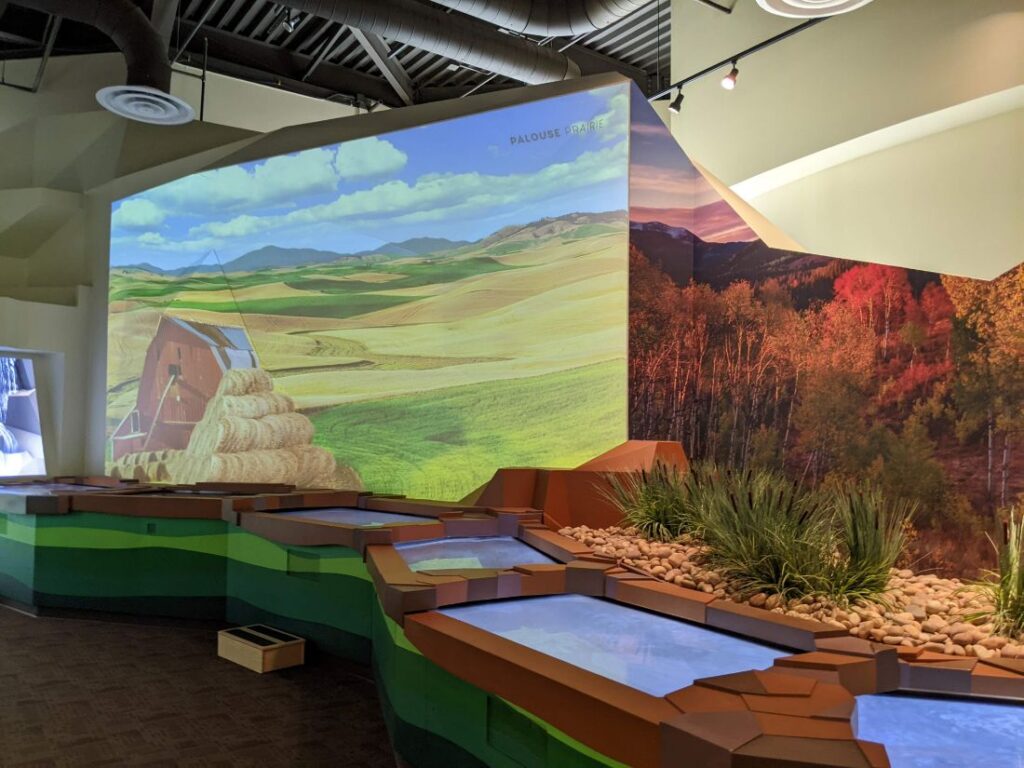
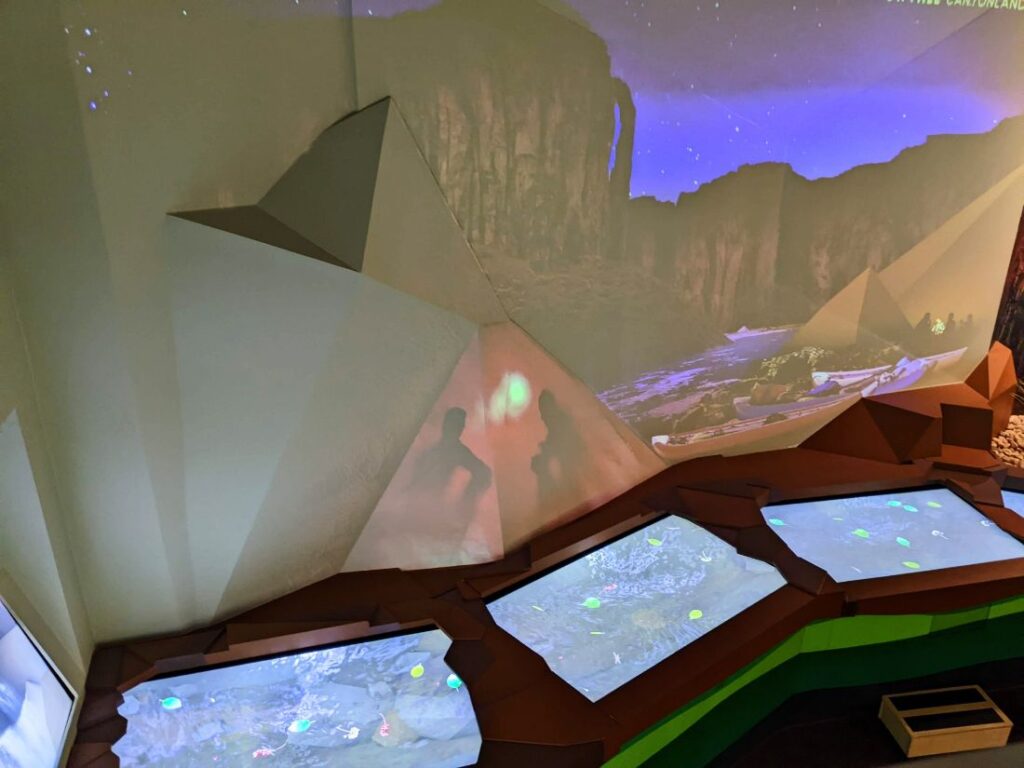
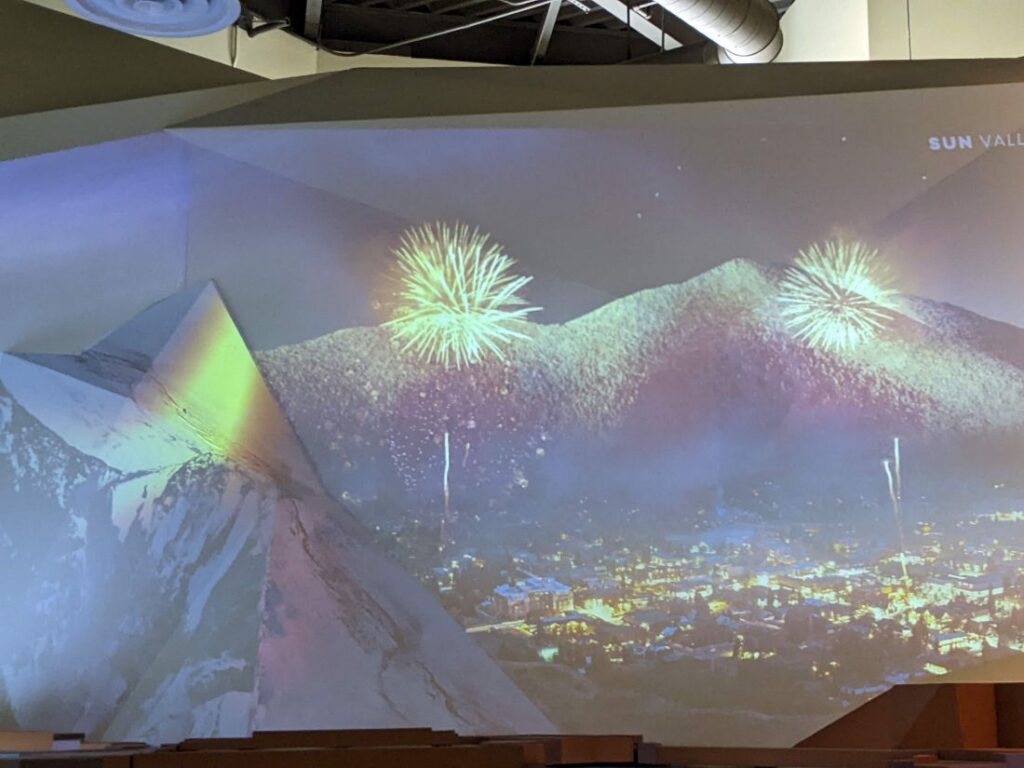
If you walk up the main stairway from the lobby, you are presented with three doors. North Idaho (Lakes & Forests), Central Idaho (Mountains & Rivers), and South Idaho (Deserts & Canyons.) Heading from North to South gives you a good history of Idaho in a general sense, so you might want to start from the right-hand door.
You can also access the North Idaho room from the upstairs portion in the Idaho Origins room without walking back through the lobby at all. All of the three main upstairs rooms have a front door plus a back way in.
North Idaho: Lakes & Forests
In the North Idaho room, you can learn about Idaho’s history of mining and forestry. Gold, then silver mines prospered for a while, and you can peek out from an upstairs fire lookout tower.
All of these rooms have a video element, and in this room is a large sensory-encompassing experience called The Big Burn. When you push a button, a huge screen taking up one wall plays through a forest fire from 1910, making you feel like you’re in the middle of the destruction.
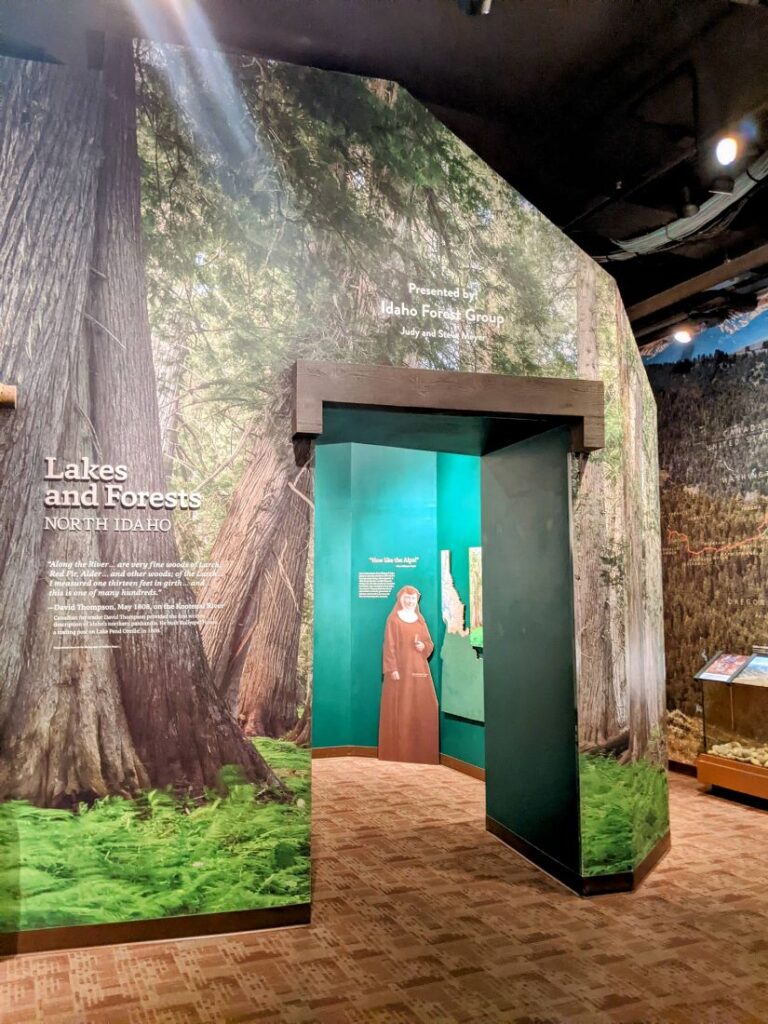
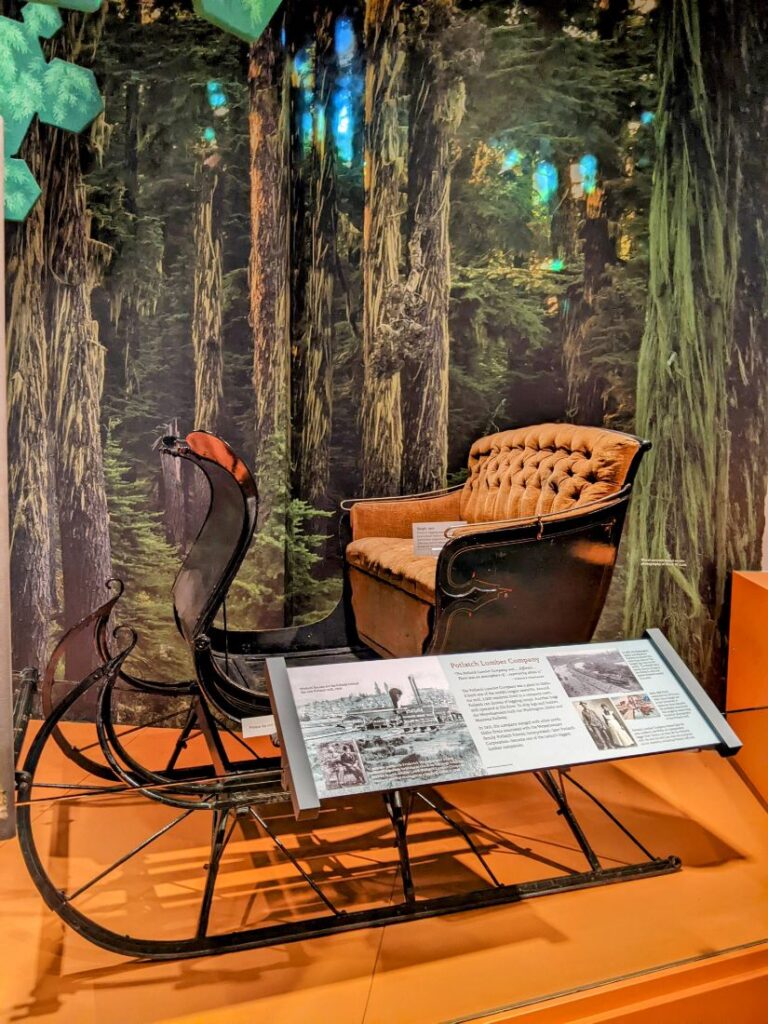
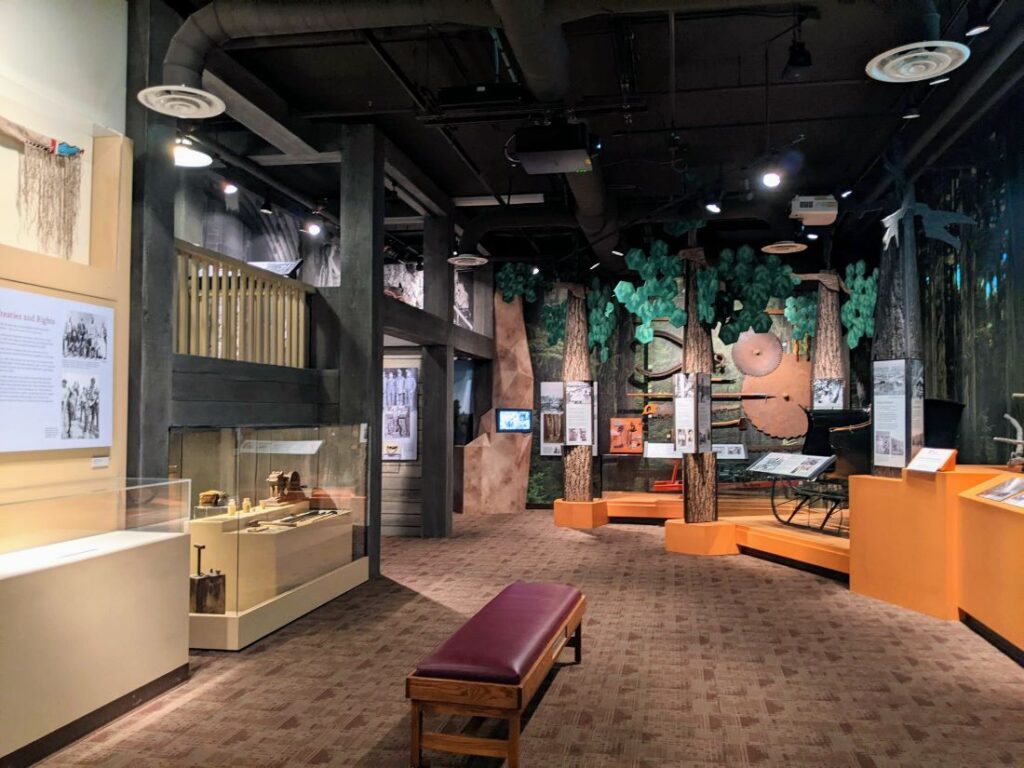
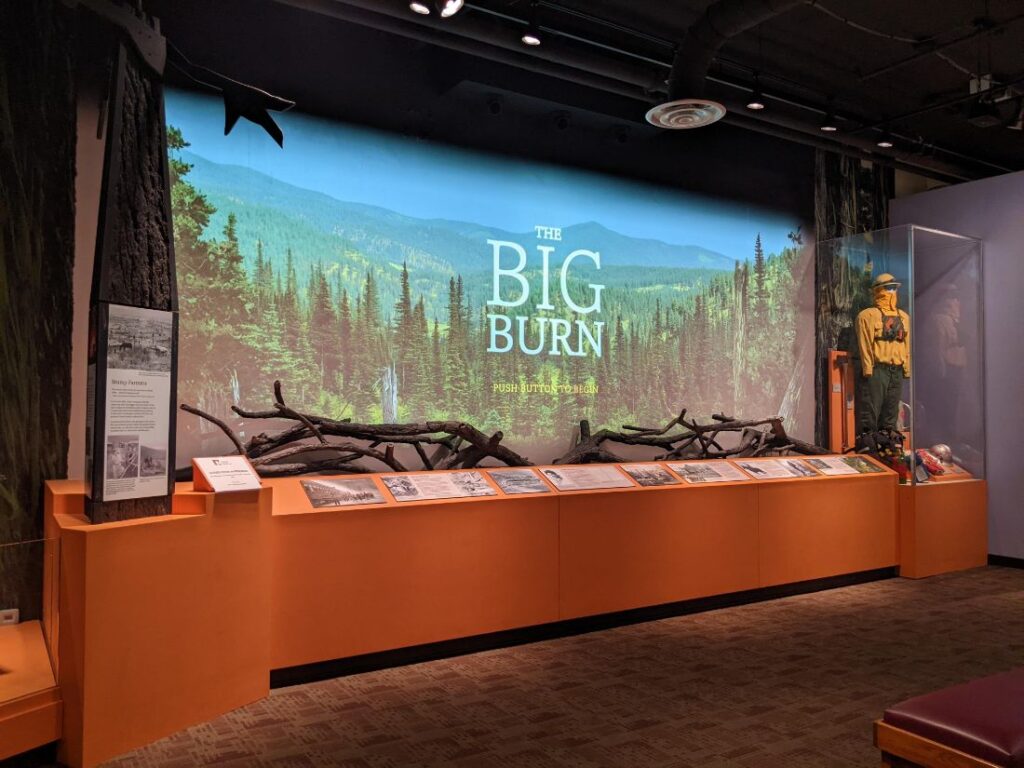
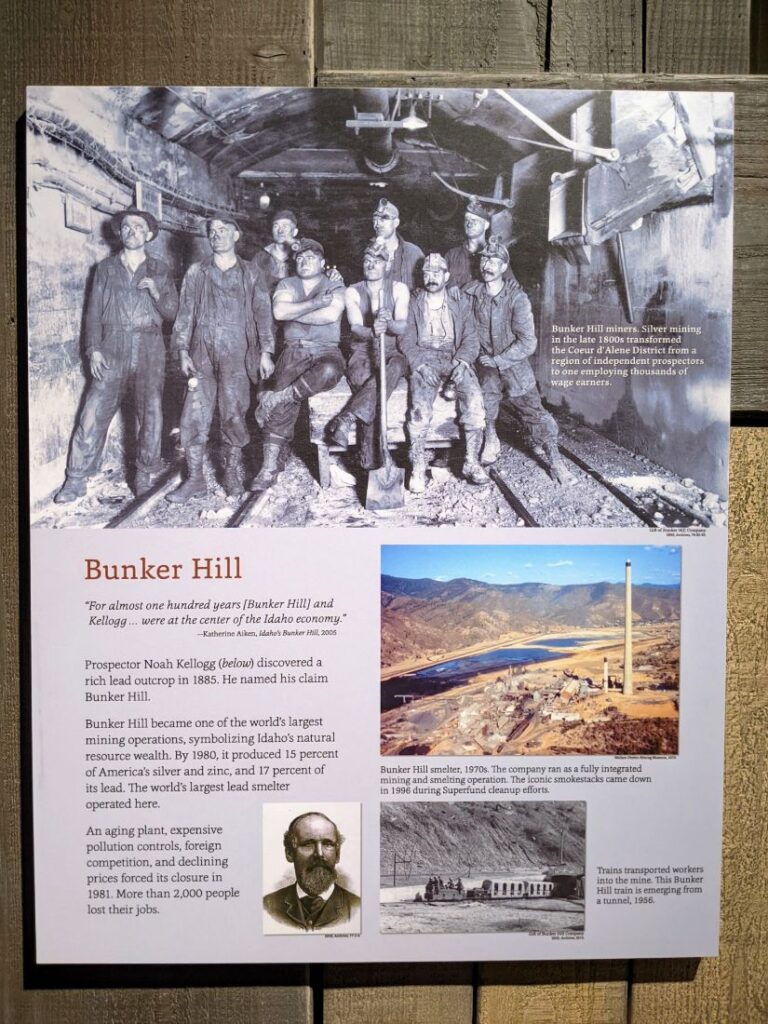
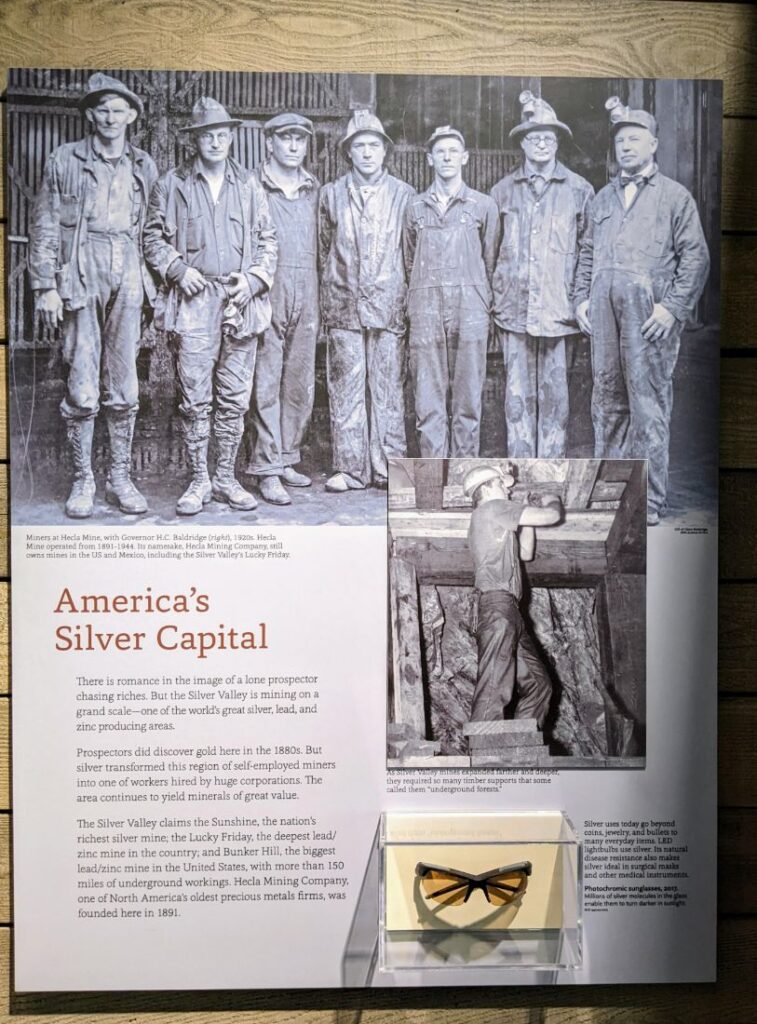
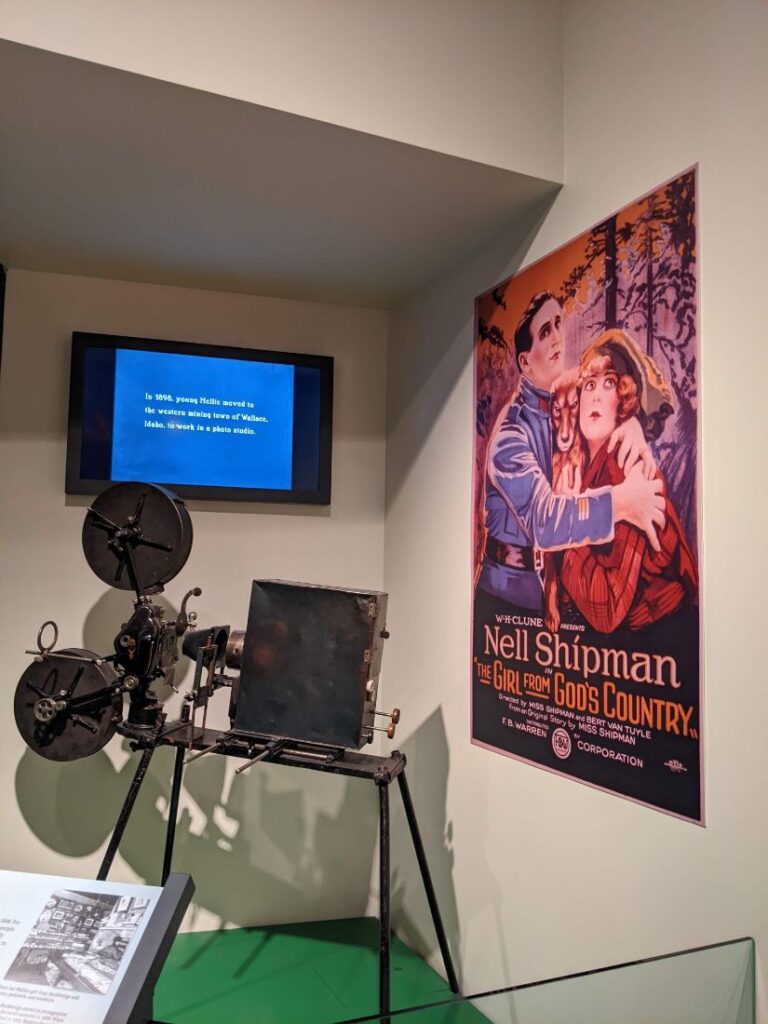
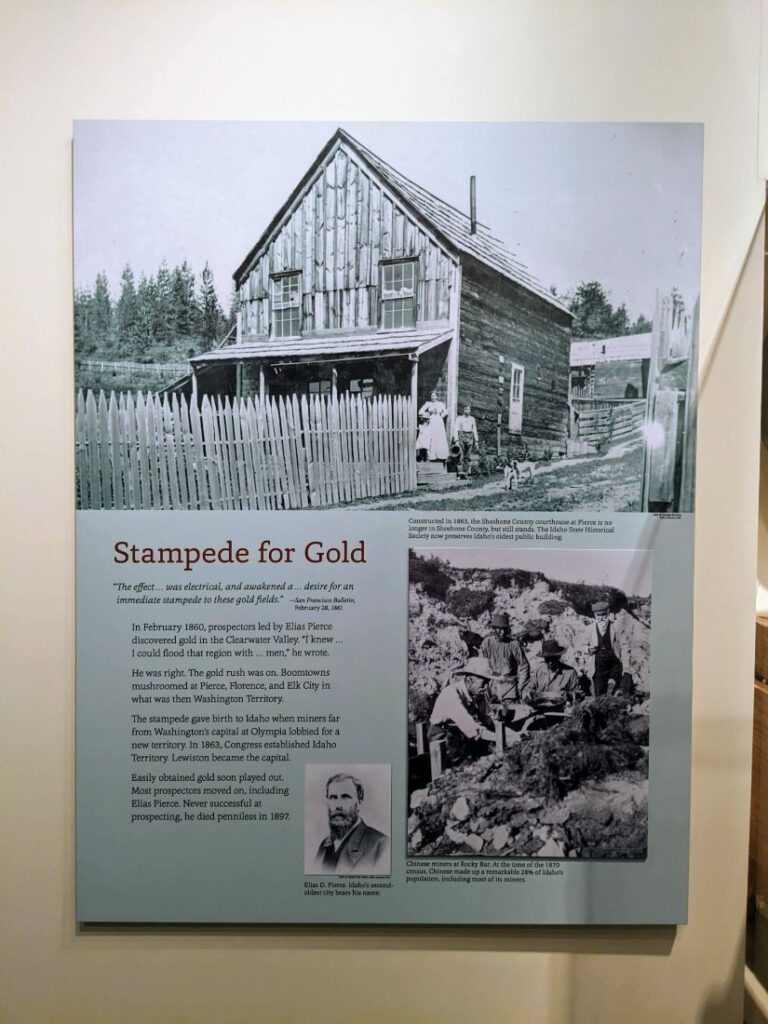
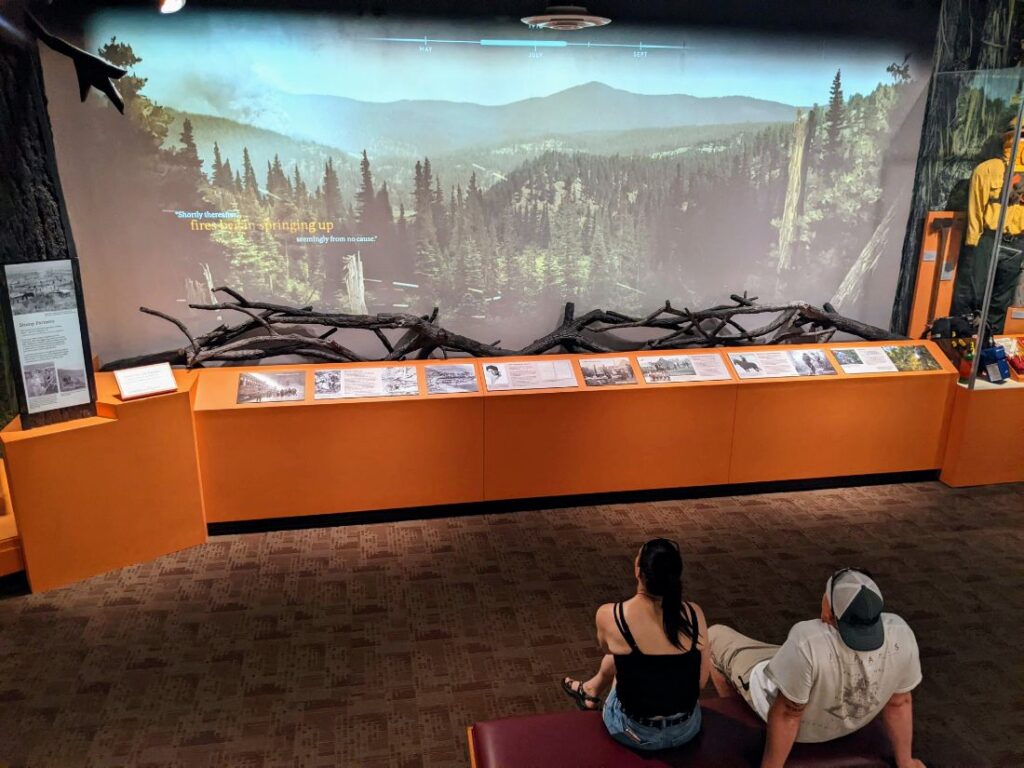
Central Idaho: Mountains & Rivers
The Central Idaho room deals a lot with Sun Valley, the ski resort town in Idaho. An “ice bank” features an old snowmobile, vintage skis, and you can sit in a chair lift chair to watch the accompanying video.
This section also features more of the fire lookout tower and a display about CCC in Idaho. And there’s a bit in the front about the “one-way river” where boaters could build a boat at the north end and float supplies down, but it was too treacherous to return, so you’d have to sell your boat for lumber at the other side. There are stories of early settlers and a cute video of “Lonesome Larry” the fish that is great for kids. You can come and go from the North Idaho room through the lookout tower as well as the front door.
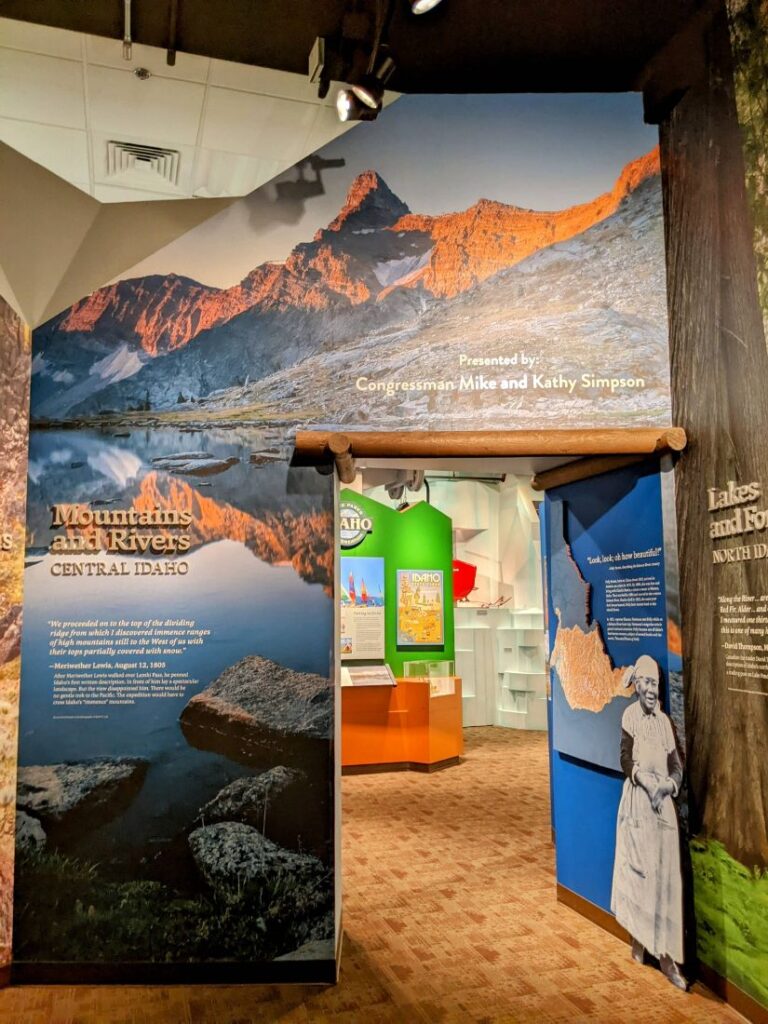
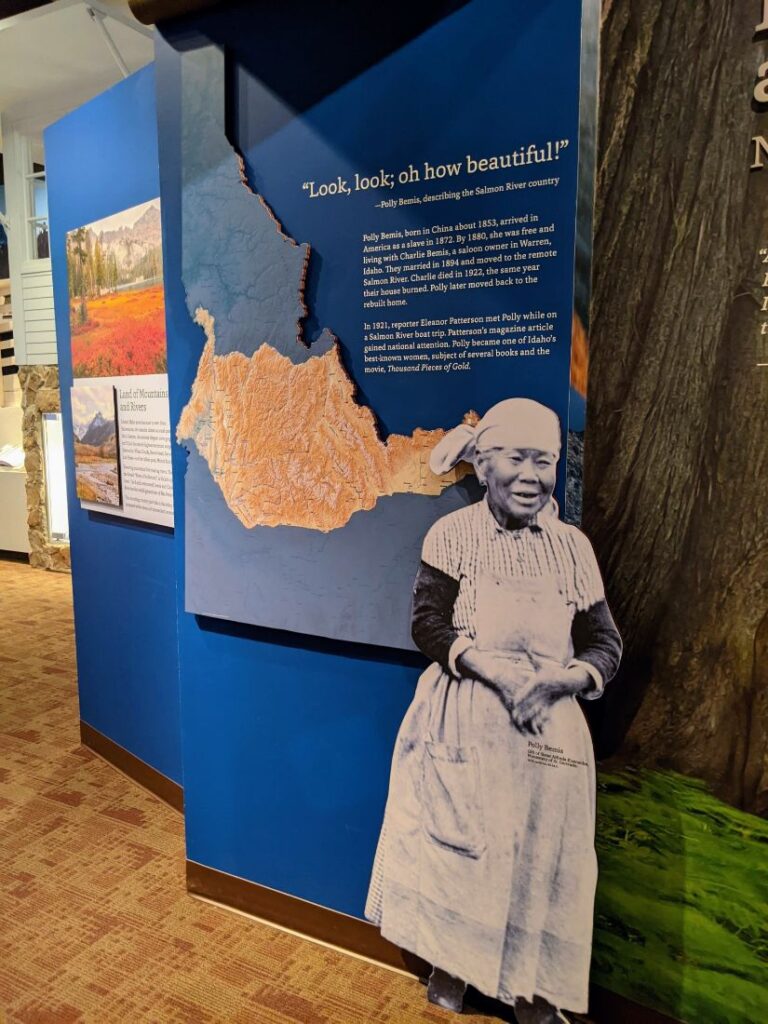
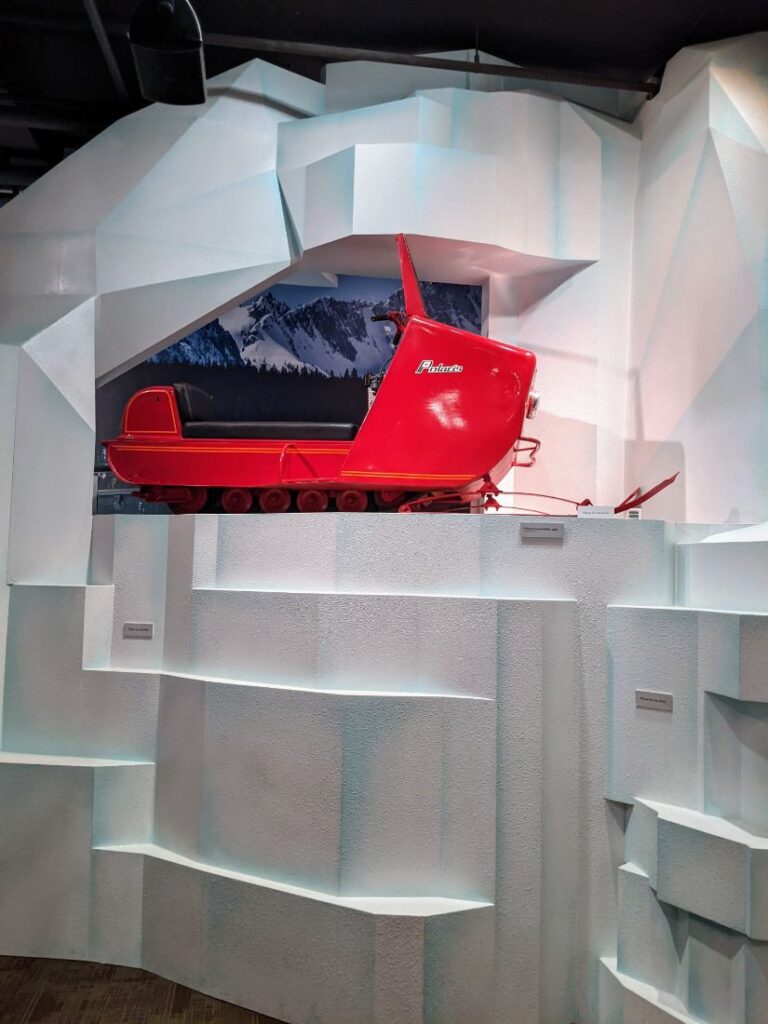
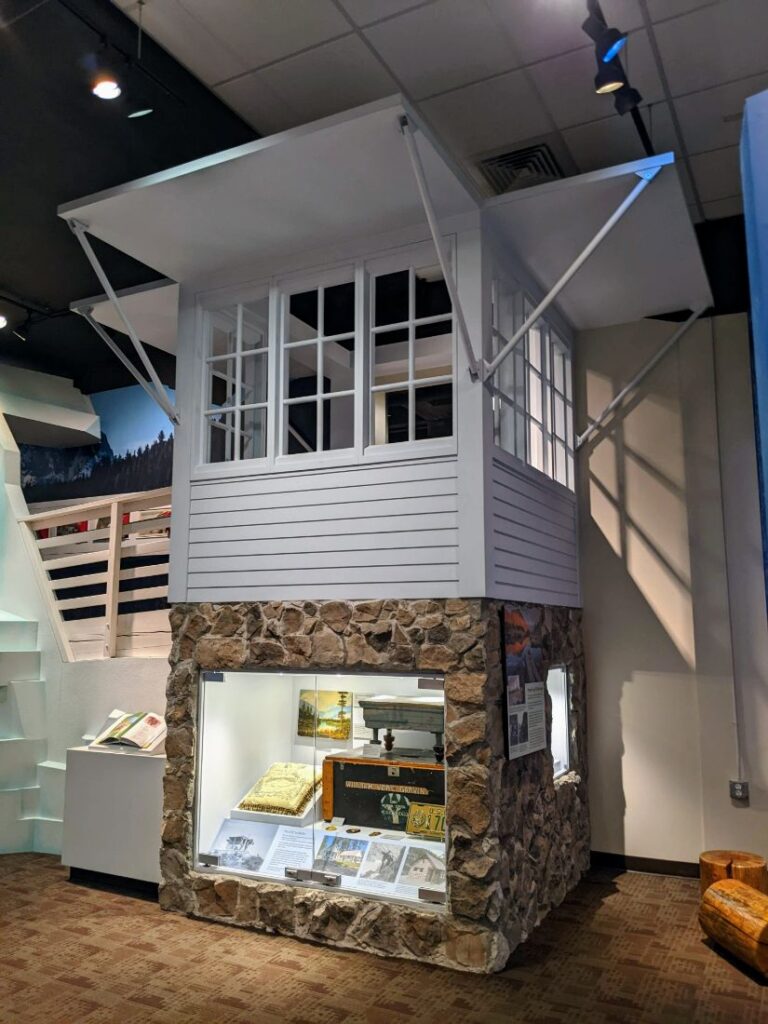
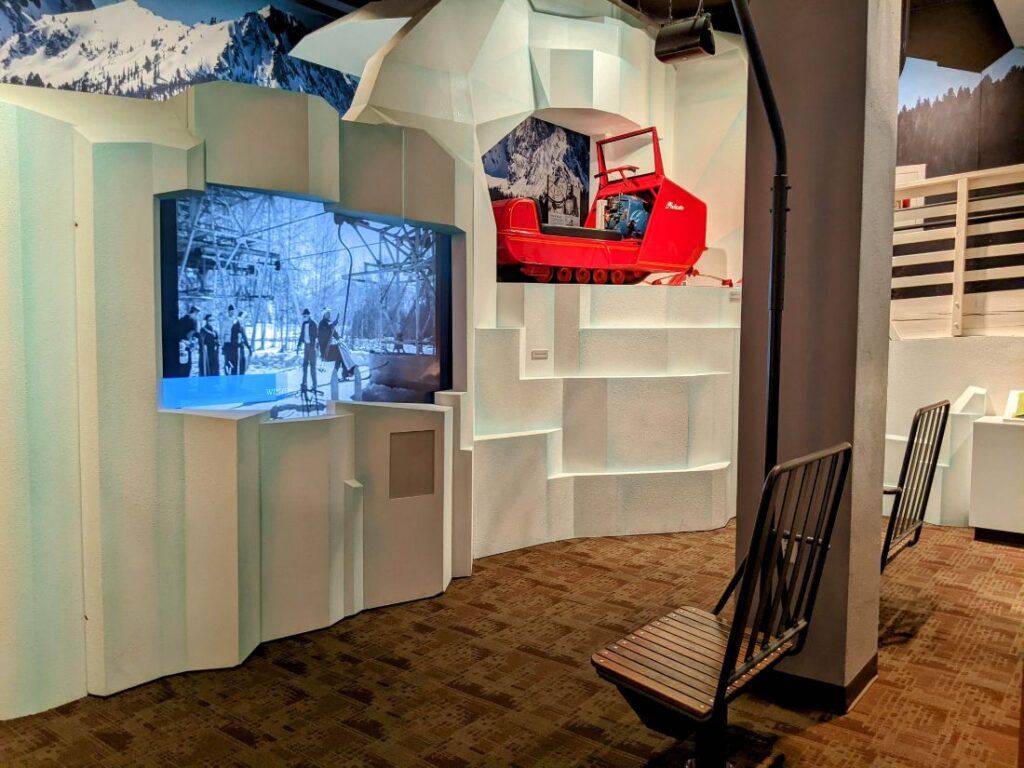
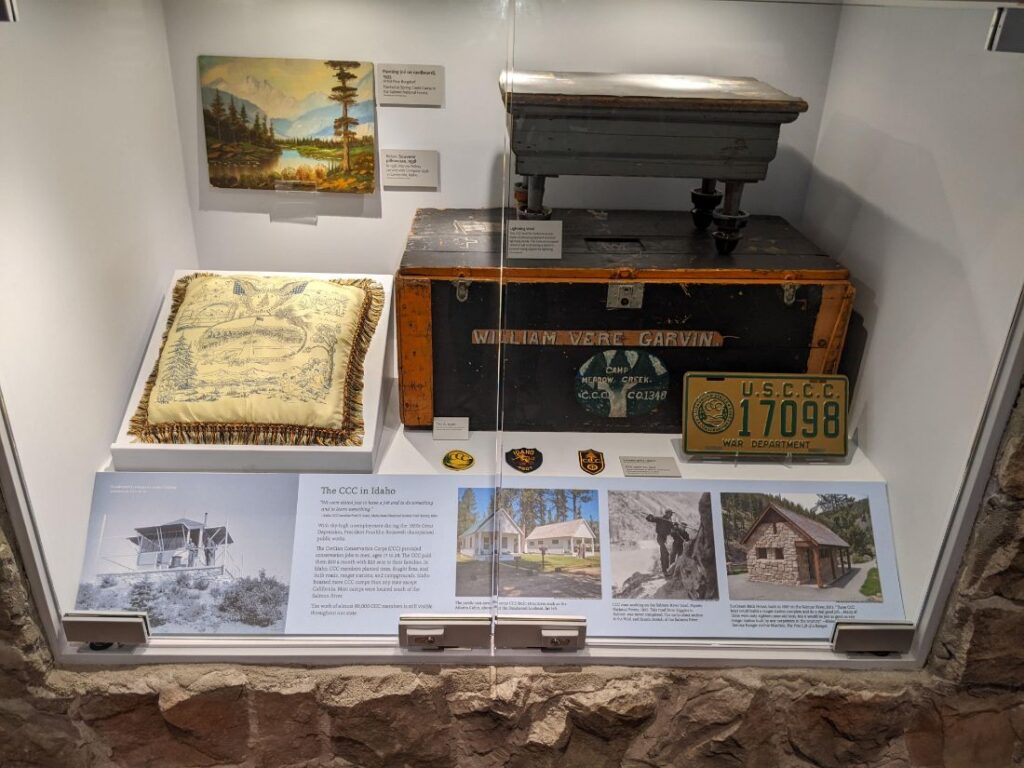
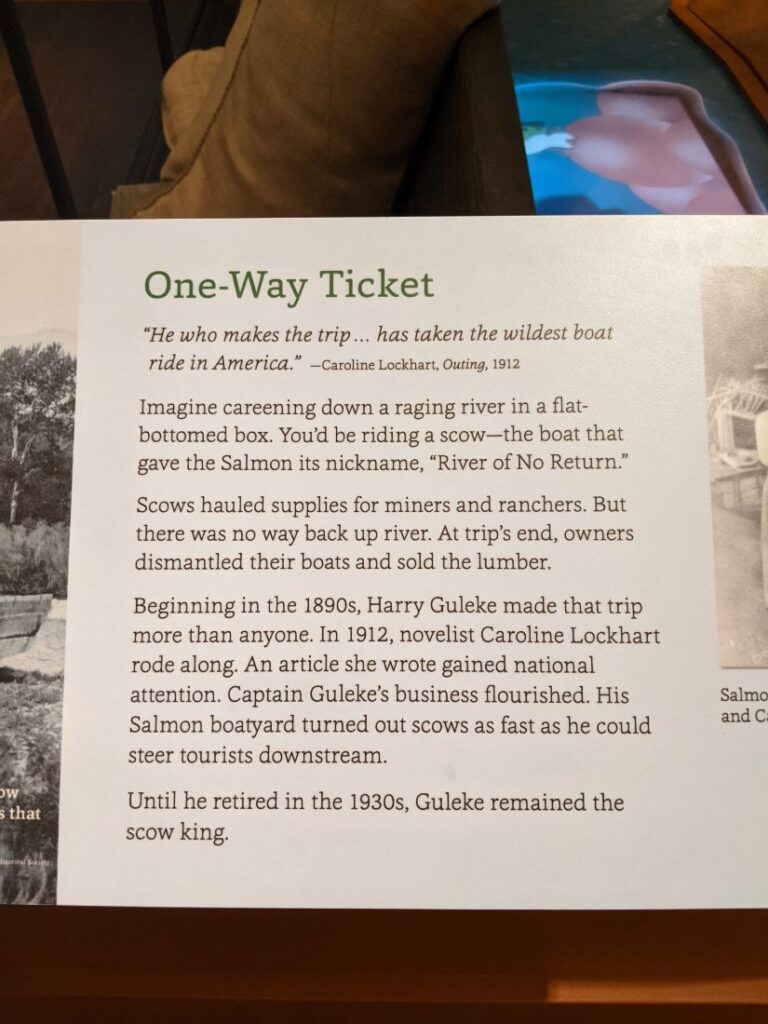
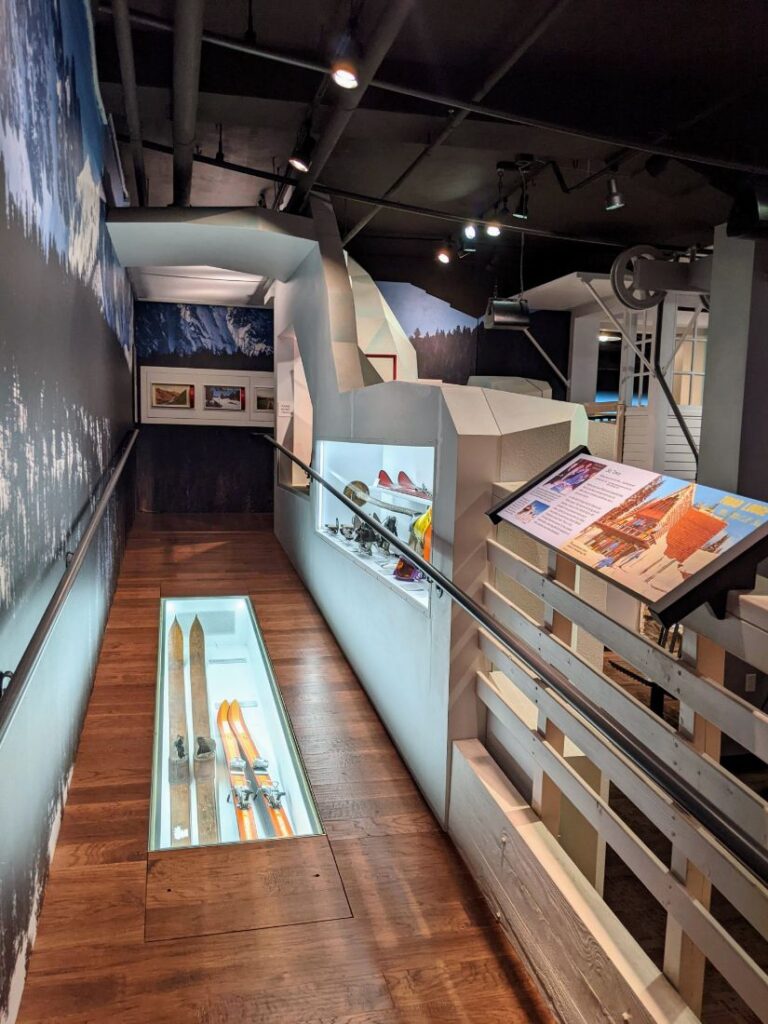
South Idaho: Deserts & Canyons
The South Idaho section is the largest room, covering everything from pioneers with covered wagons to the Oregon Trail video game. There’s a lot to do with agriculture in a dry climate and the formation of dams and irrigation. There are a lot of interactive stations, like controlling hydropower and an Idaho agriculture game. There’s even a bike tour you can “take” by video, but the bike was broken on my visit.
A cute video near the entrance features the fun kid-friendly story of air dropping beavers into the area. One wall deals with using underground geothermal heat for homes, businesses, and the popular Natatorium public pool. Another sign addresses Jack Simplot, the man who made potato farming in Idaho very prosperous and famous. A life-size photo of Marilyn Monroe wearing an Idaho potato sack leads to the upstairs “ski area” in the Central Idaho room next door.
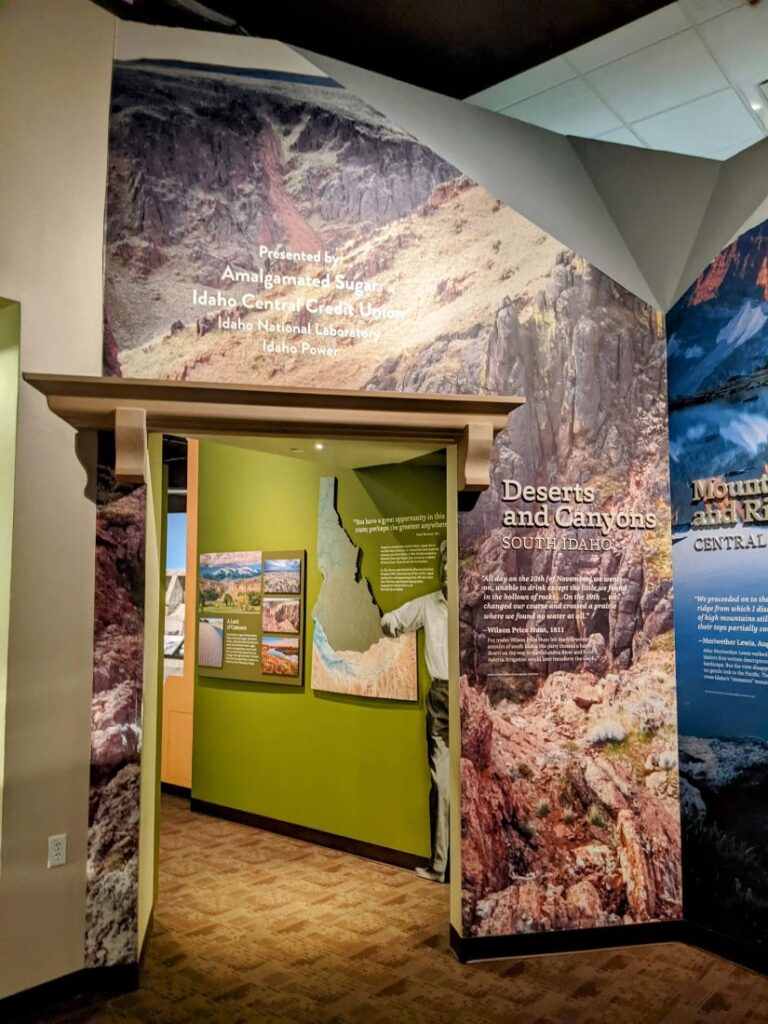
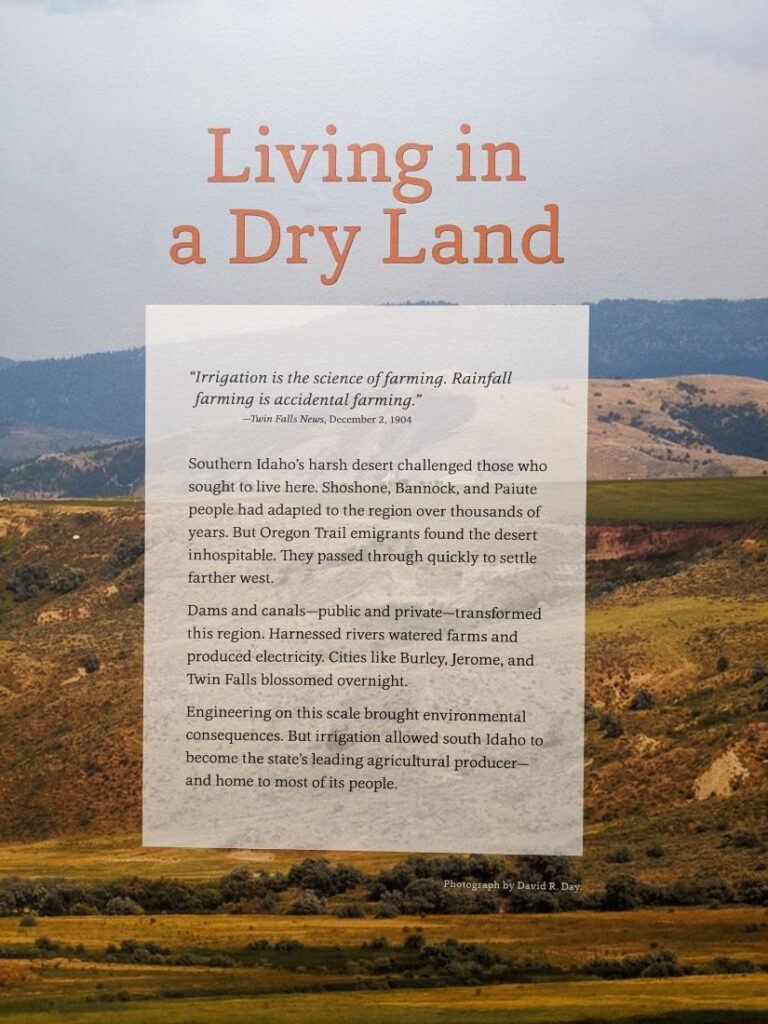
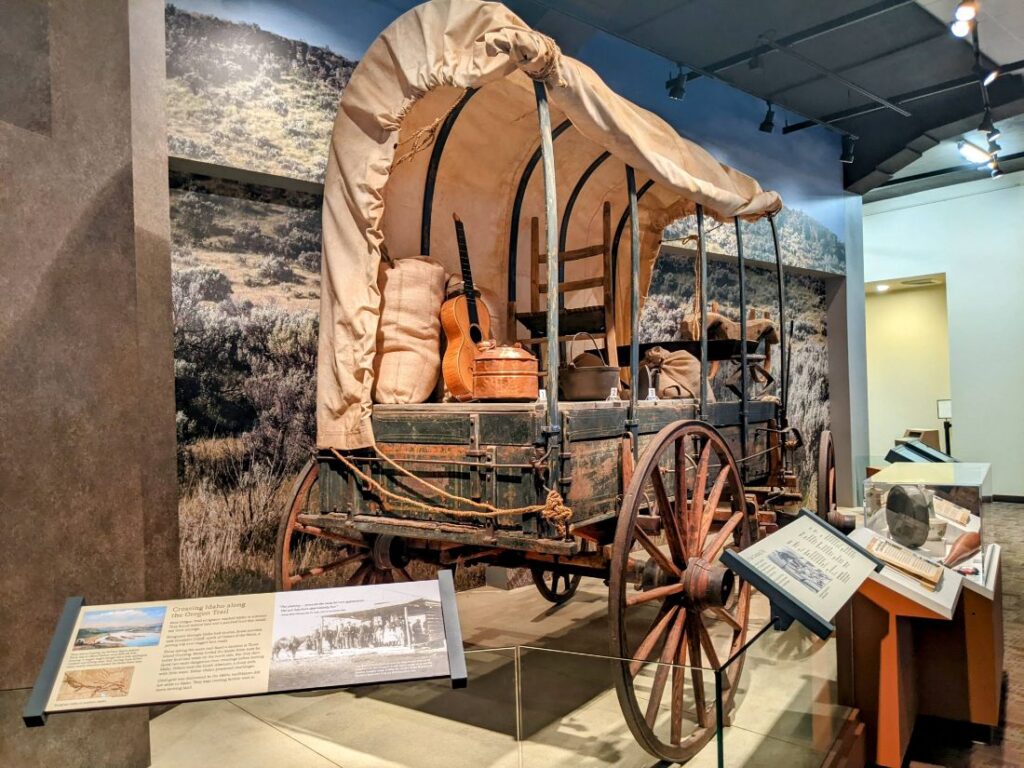
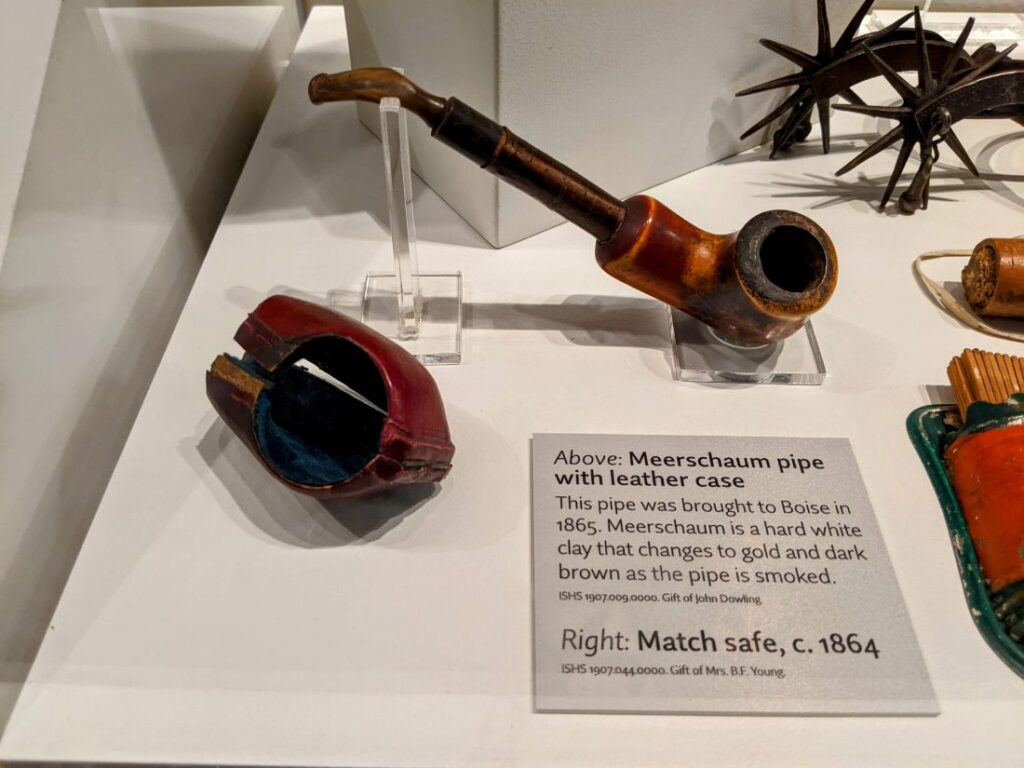
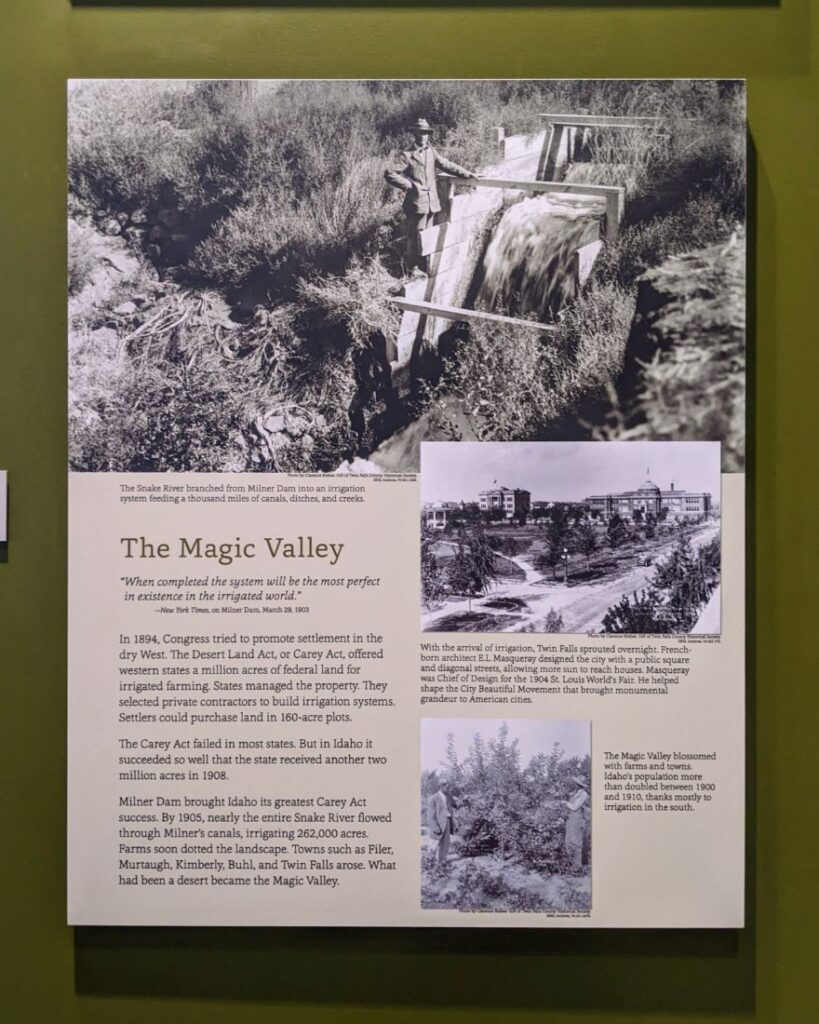
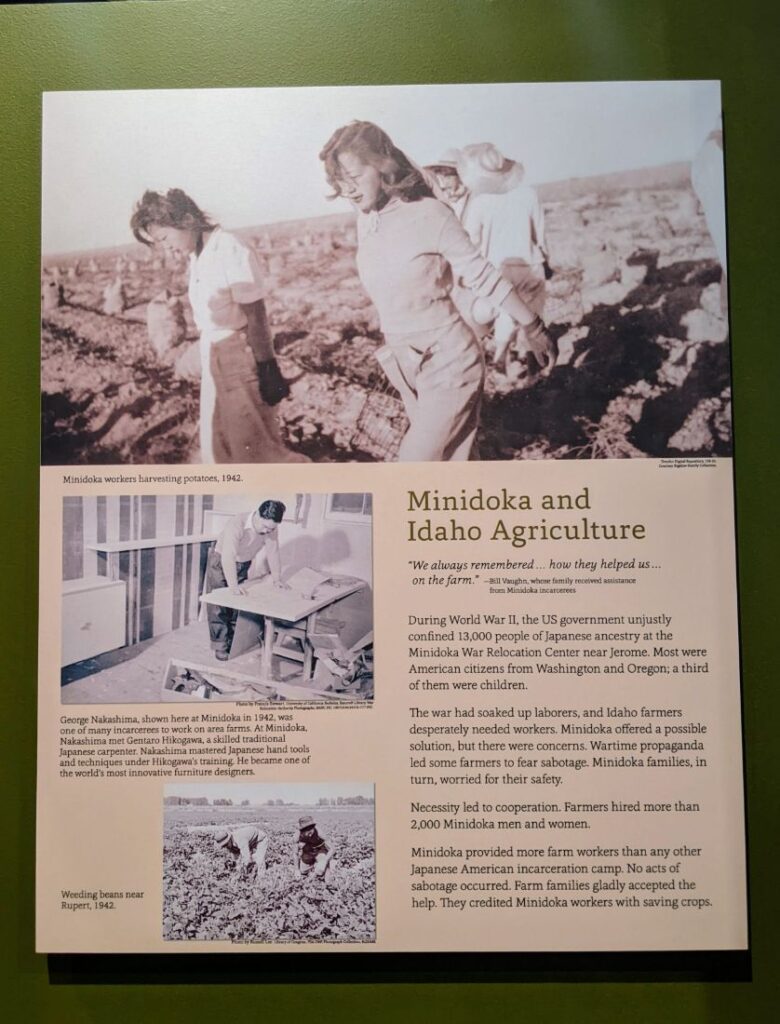
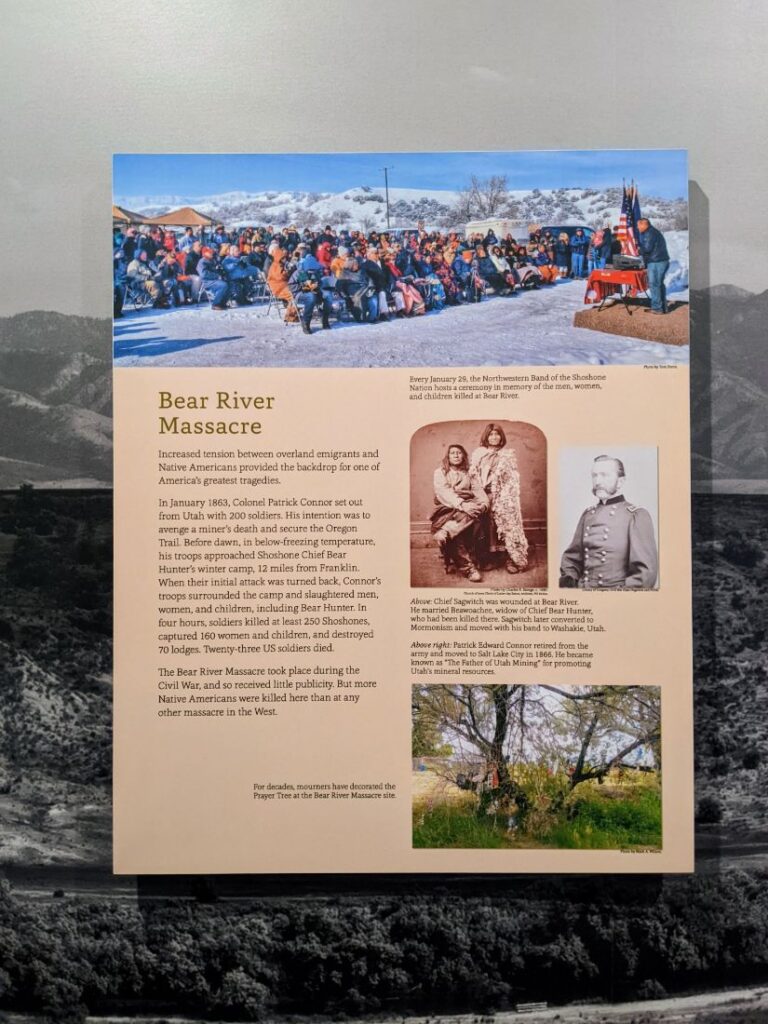
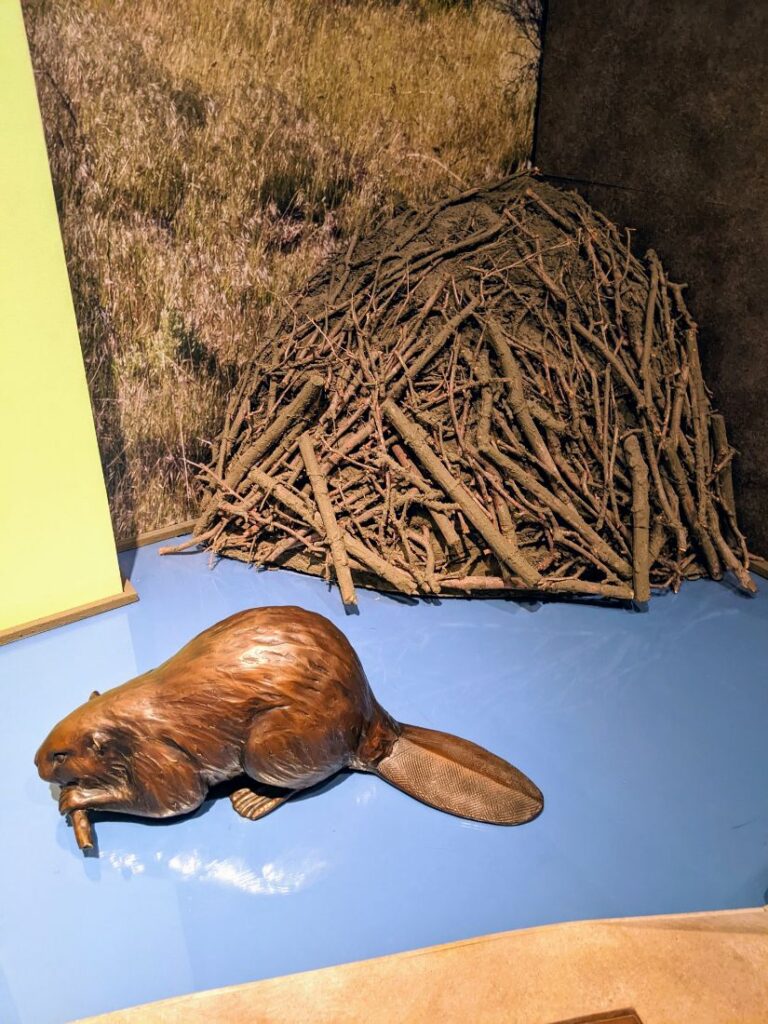
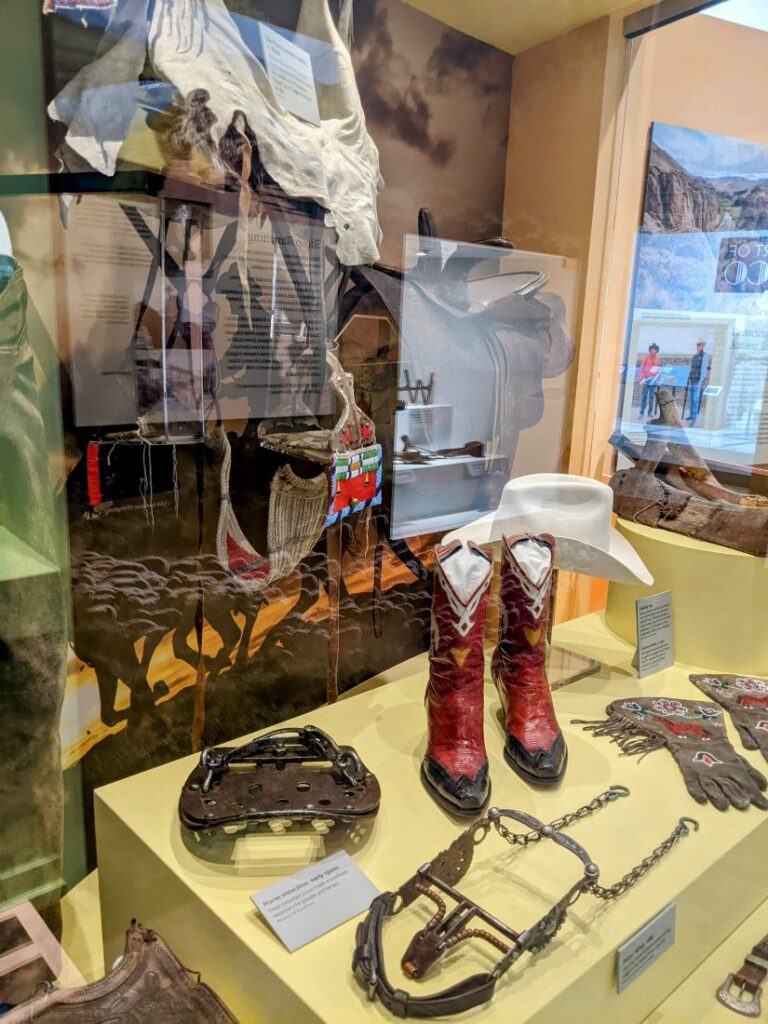
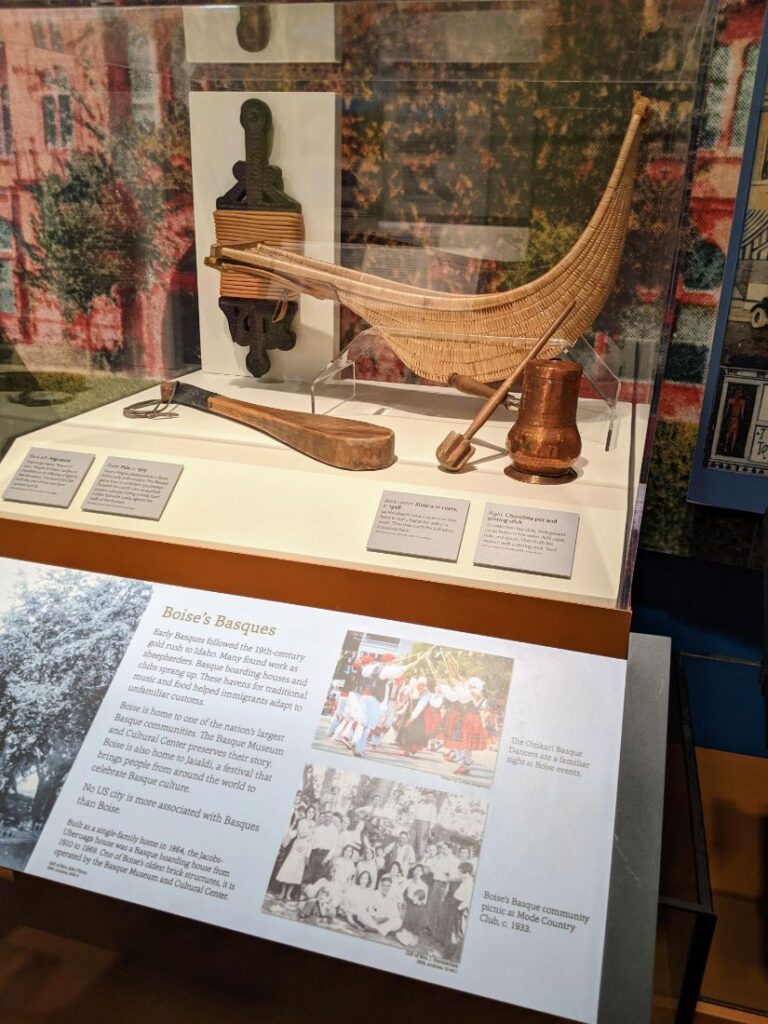
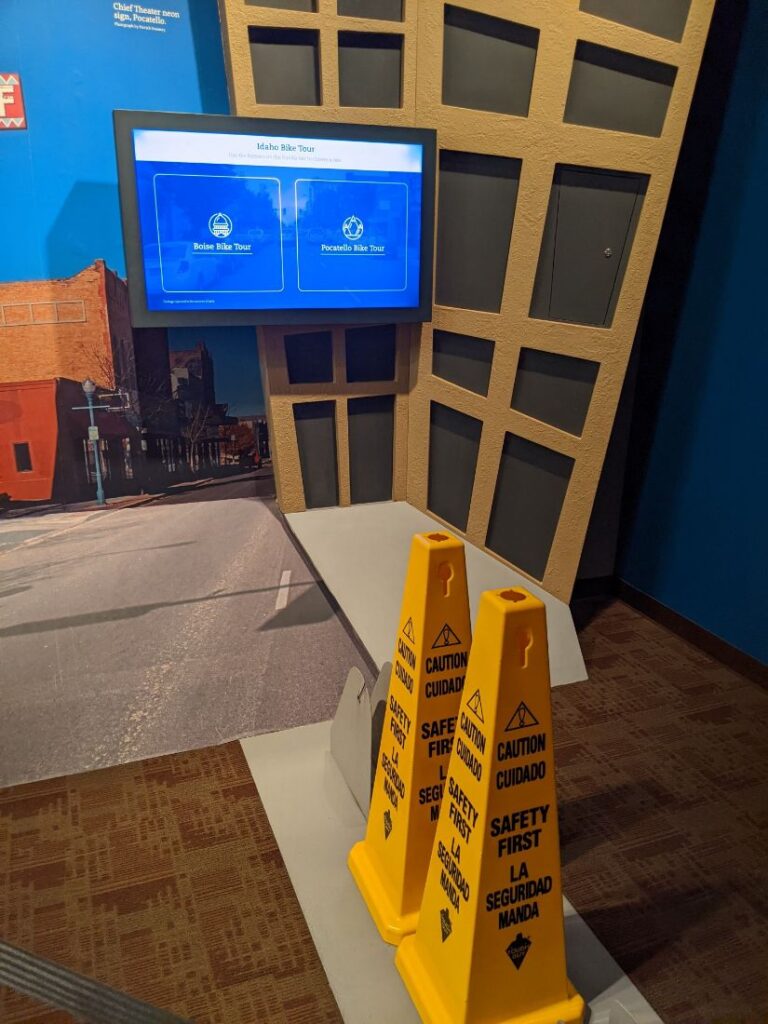
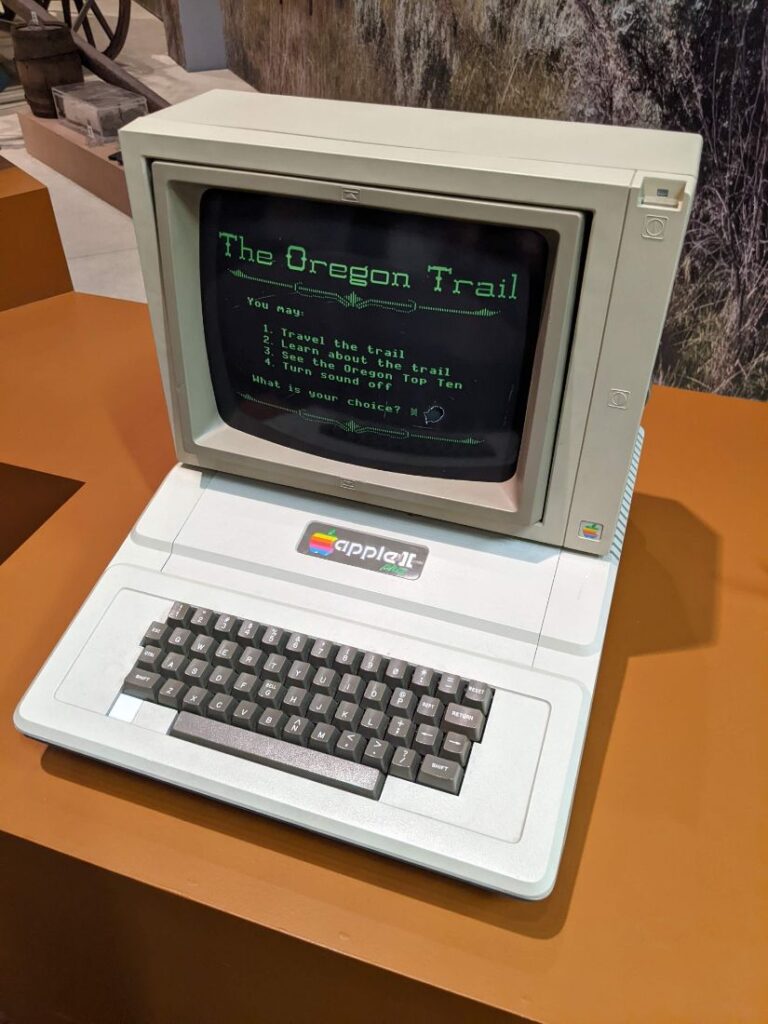
(sadly, it doesn’t work)
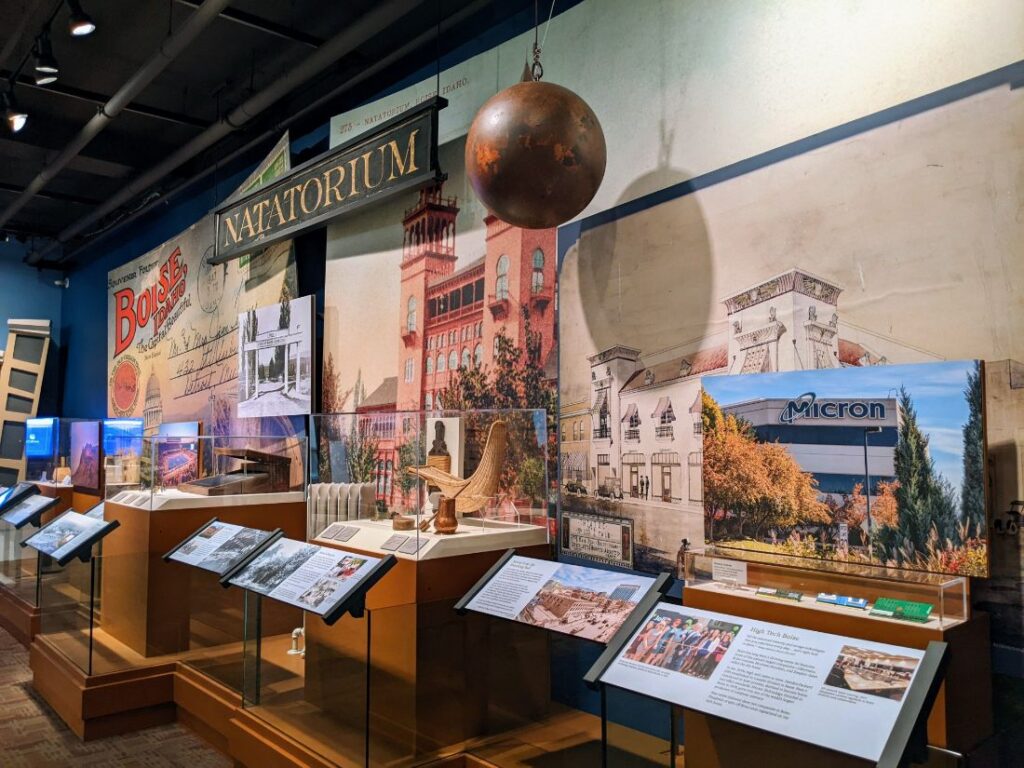
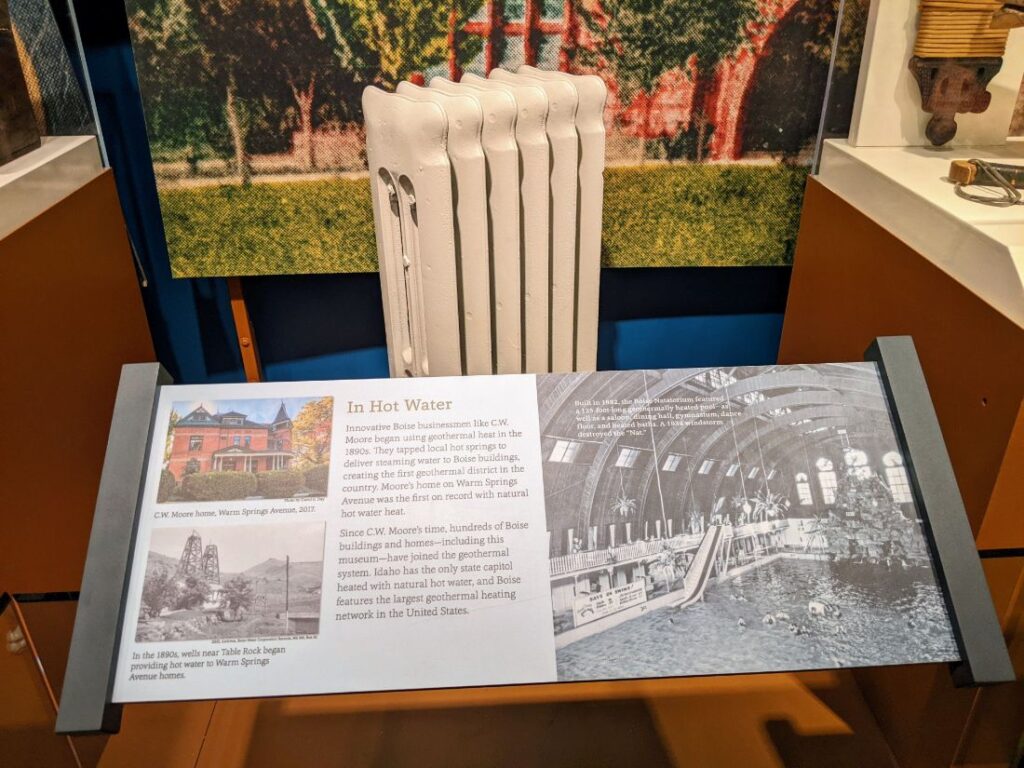
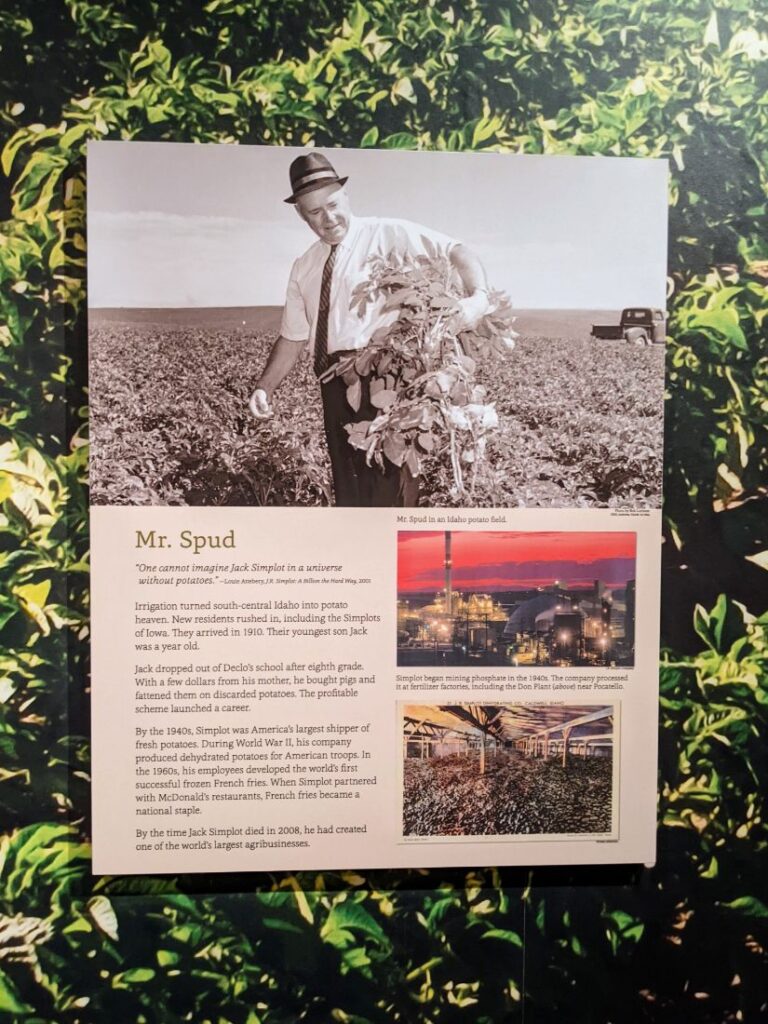
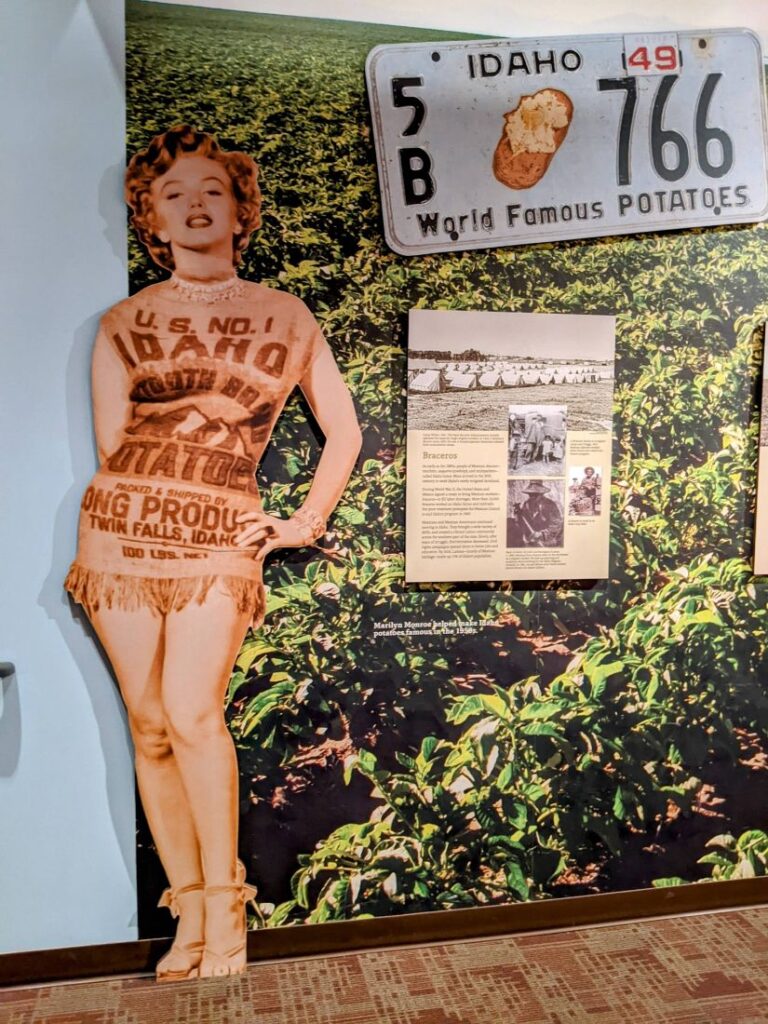
Treasures Gallery: The Art of Deco
Beyond the South Idaho room is the Treasures Gallery, a room with changing exhibits. During my visit, it was a very cool look at the influence of the Art Deco age in Idaho, with lots of clothes, jewelry, household goods, and architectural examples.
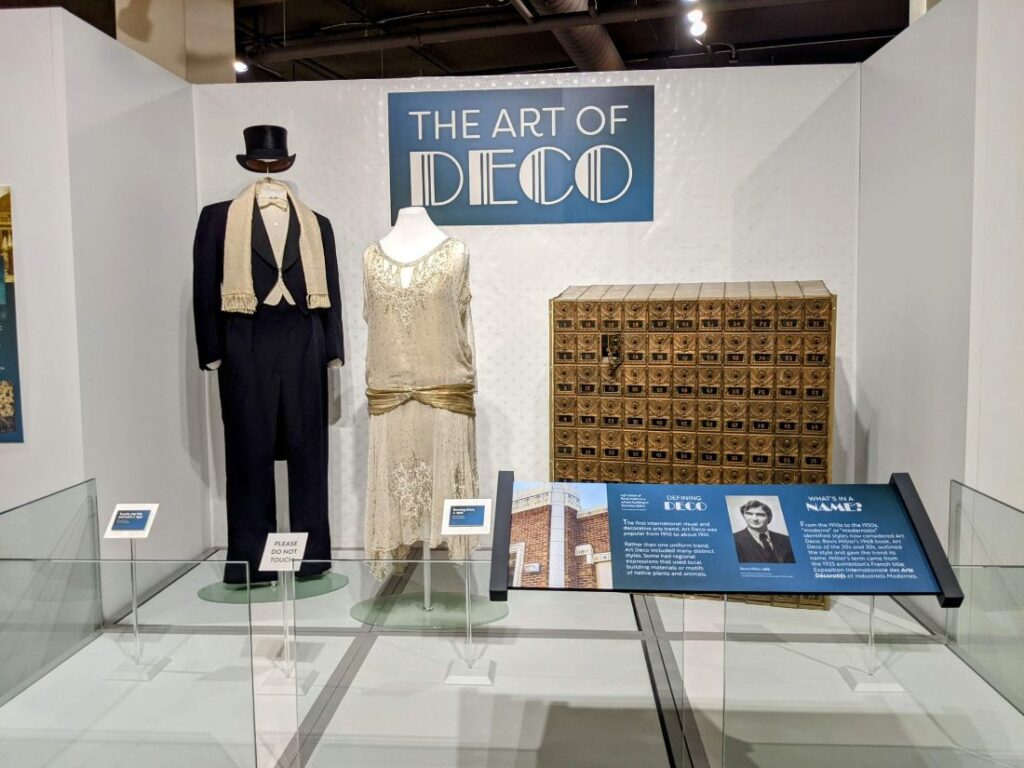
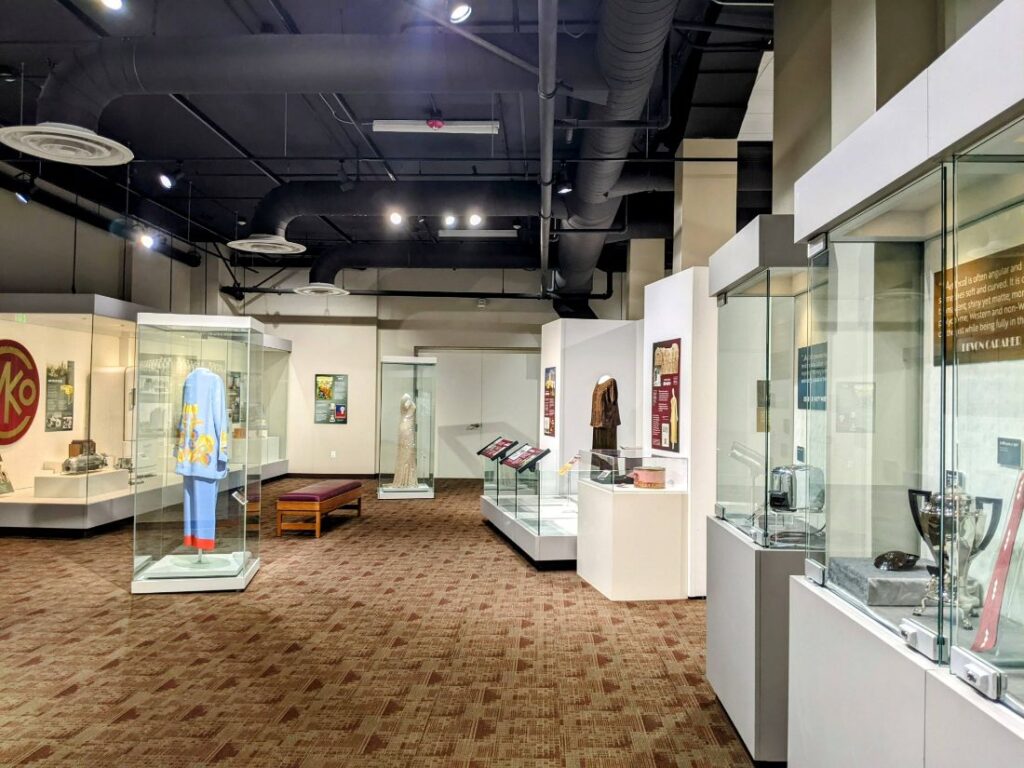
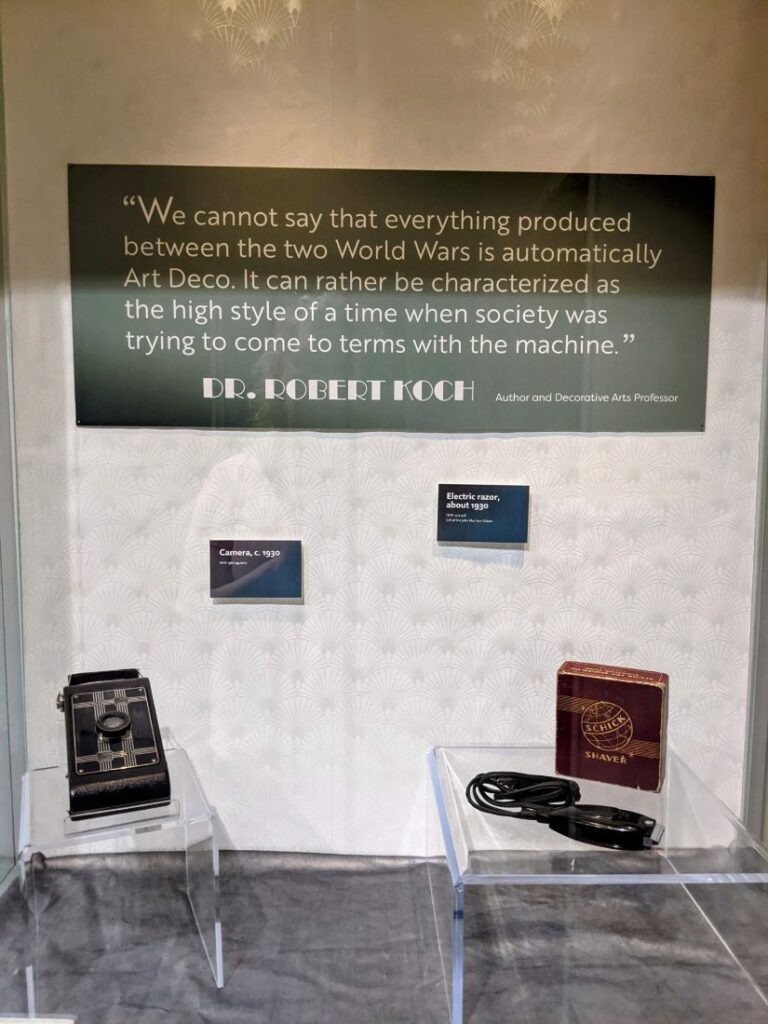
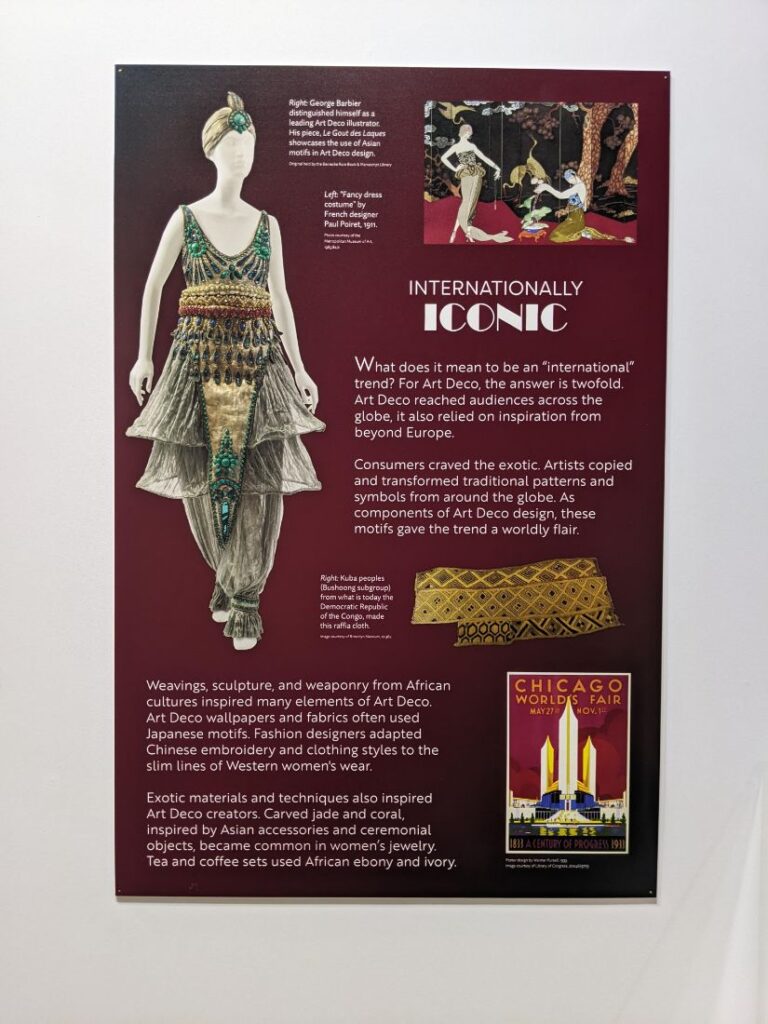
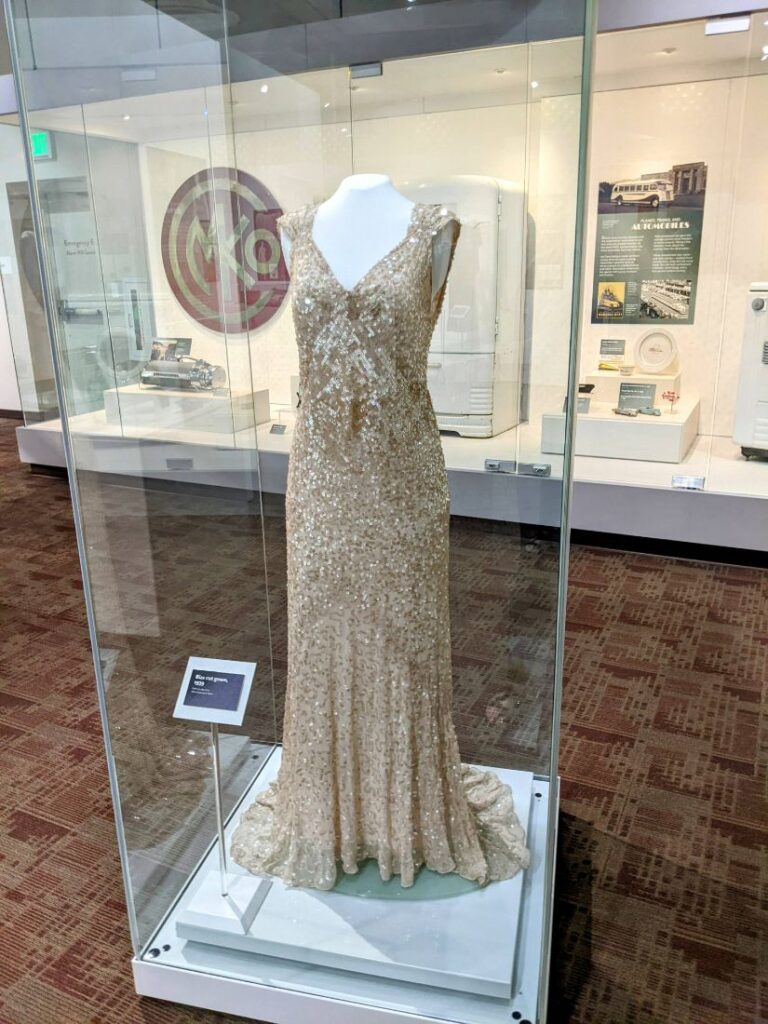
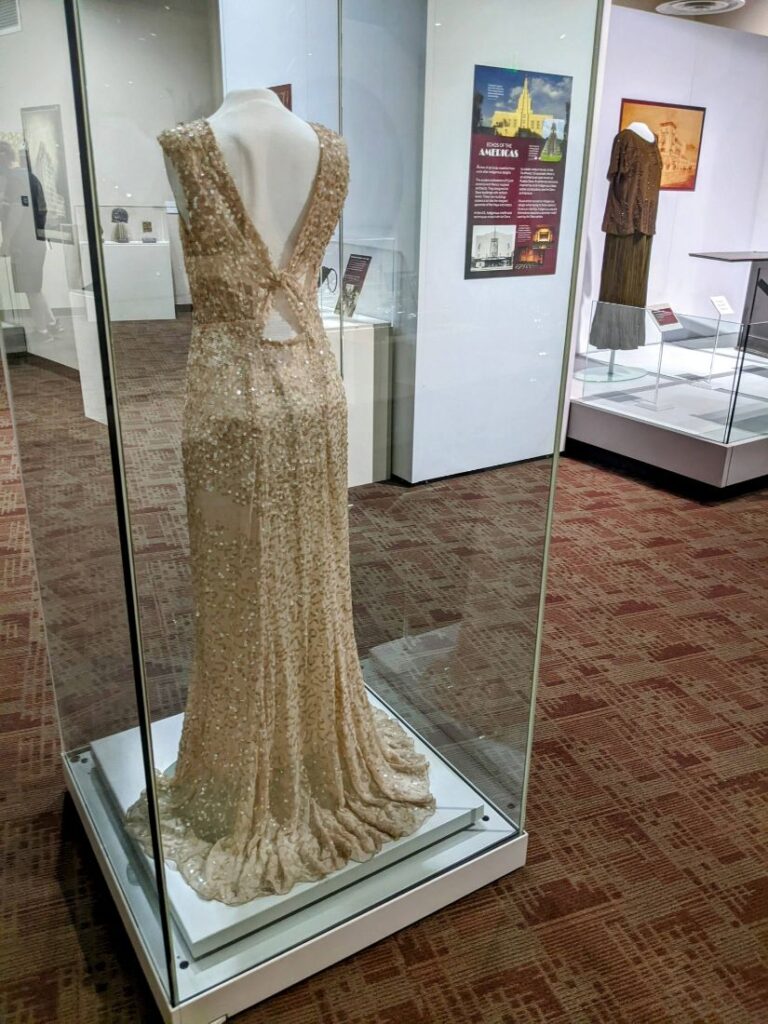
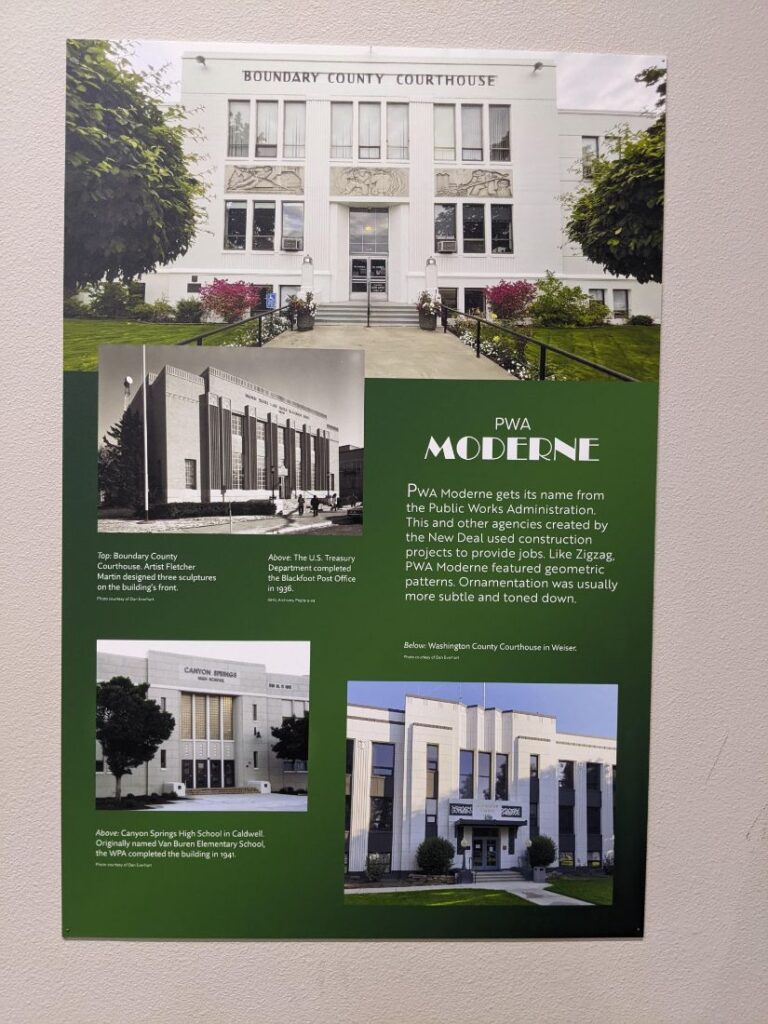
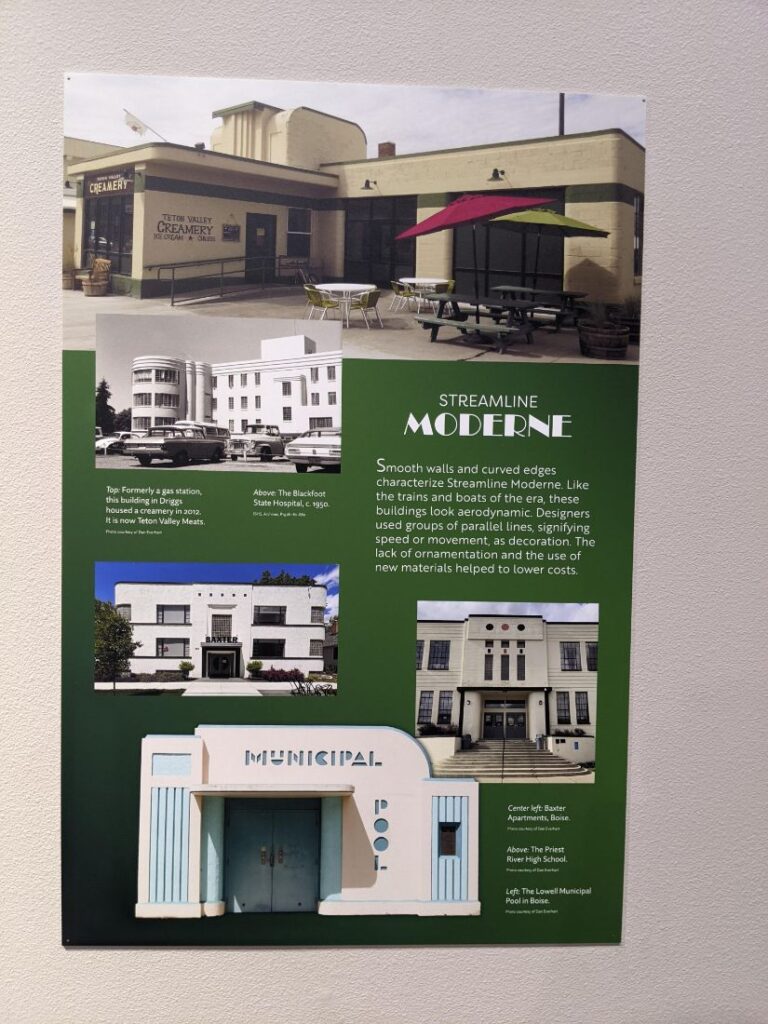
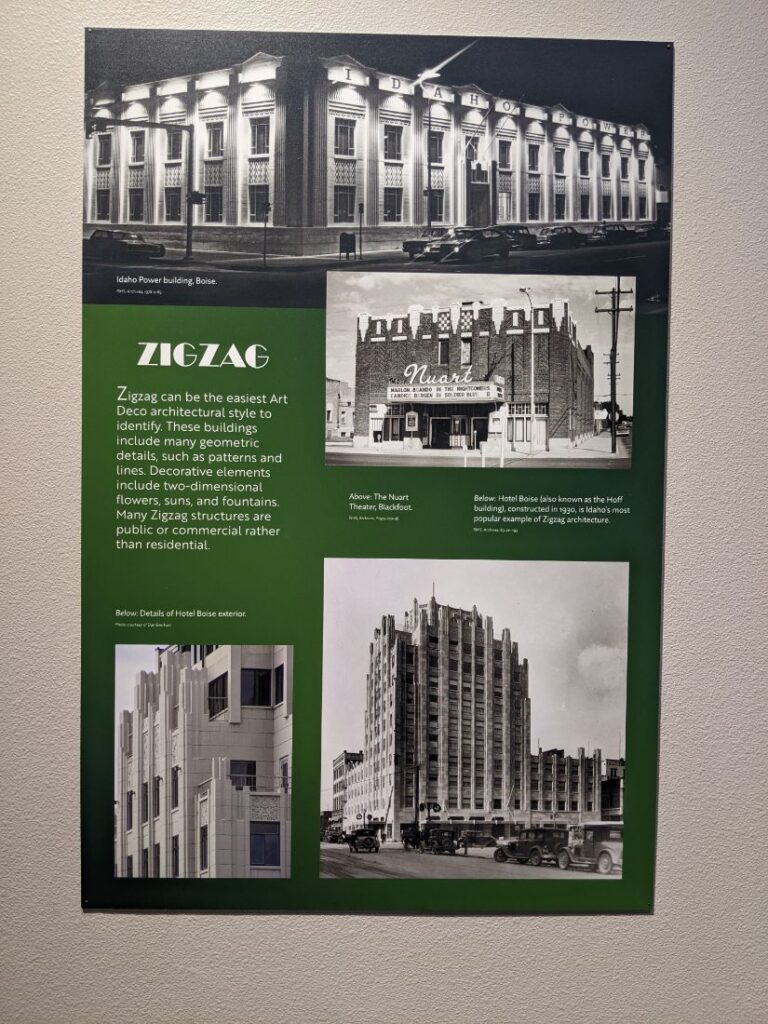
Syringa Gallery: Native Americans & Conservation
The largest temporary gallery is the Syringa Room on the far end of the top floor. On my trip, there were stations set up around the room concerning different Native American tribes and their contributions, traditions, and conservation efforts. There were lots of hands-on experiments and videos.
The coolest part was a virtual campfire space. You choose a story and the fire starts to crackle and you hear a Native tale about creation or characters in Native folklore. It was really interesting.
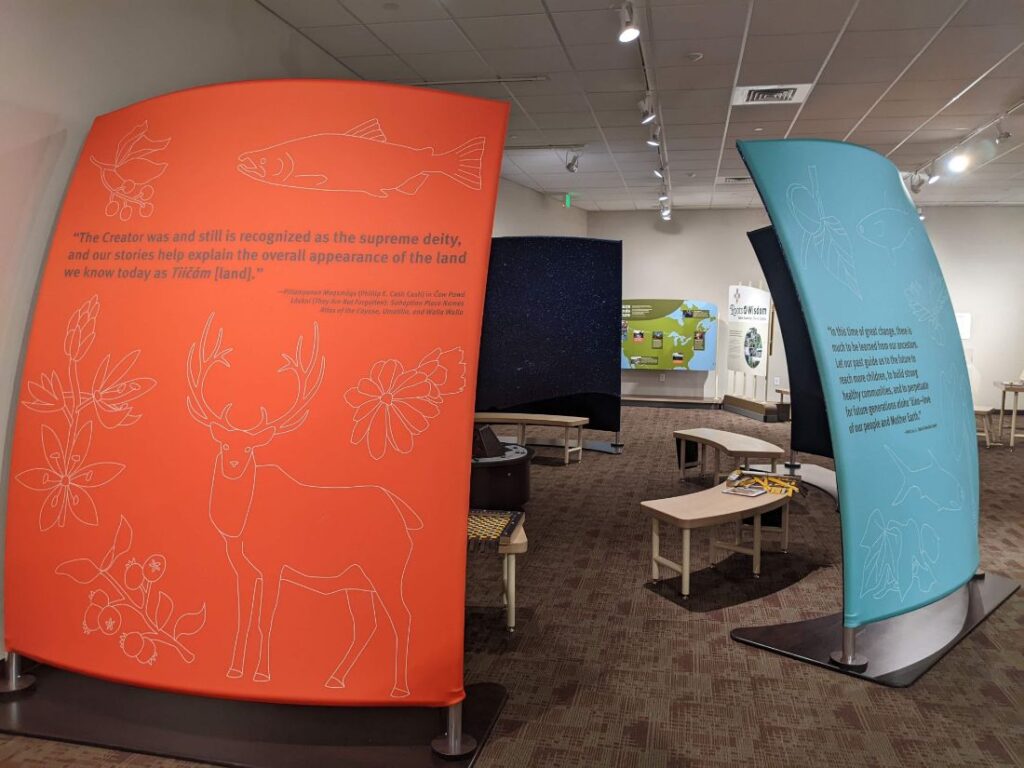
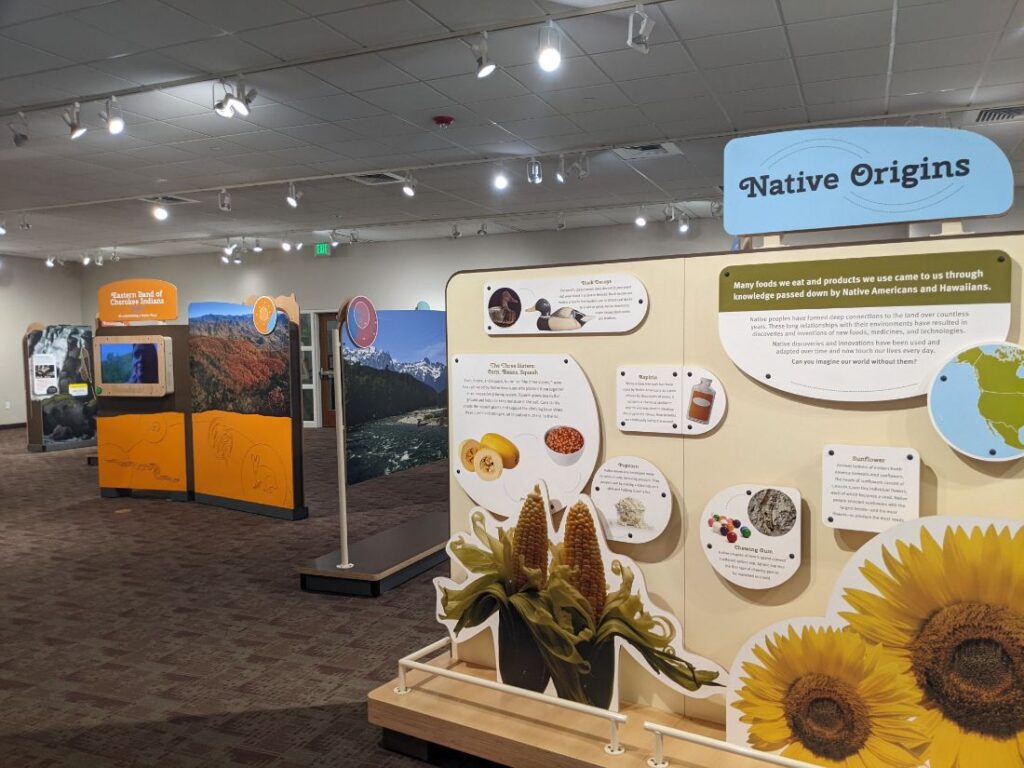
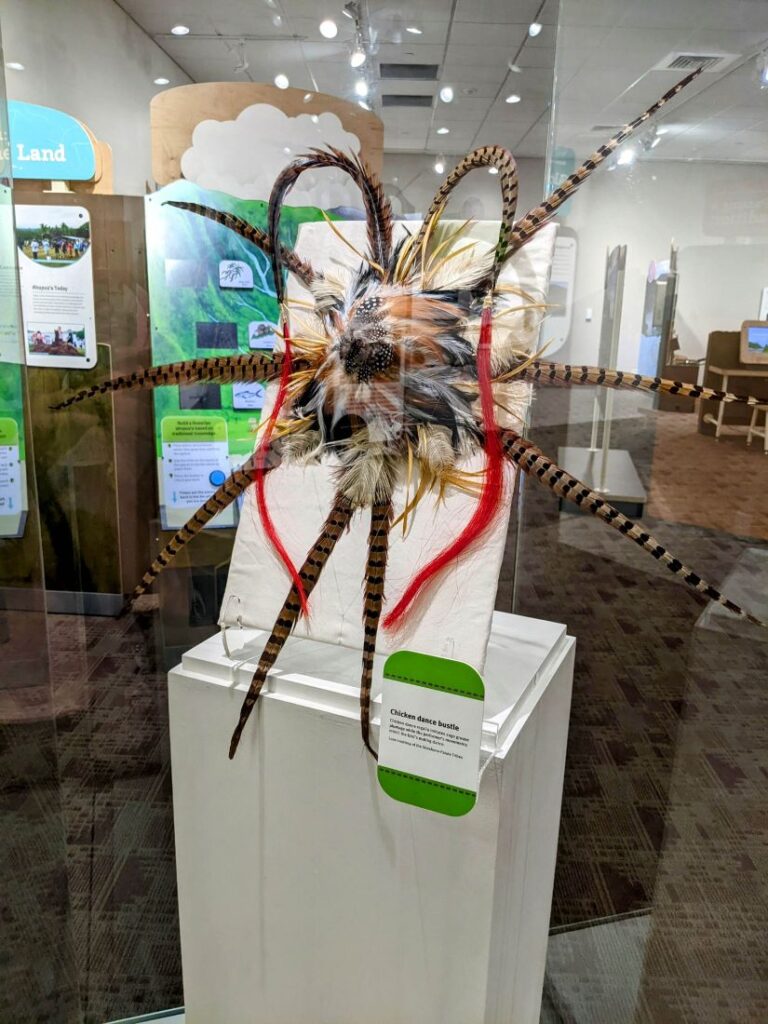
Lower Level/Basement
You can exit the Syringa Gallery down some front stairs to the lobby, or head down the main stairs, or even from the Idaho Origins room to reach the lowest level of the Idaho State Museum. Down in the basement is the place for kids! I’ll start with Boomtown, the part directly under Origins.
Boomtown is a super cute kid’s play area with a pioneer storefront, a train and station, and a mine. Throughout there are buttons and levers, train whistles, and you can even push the plunger for the dynamite in the mine! Smaller rooms across the way have a soft-play area for the smallest visitors. Along the wall is a cute penny arcade with a two-headed calf!
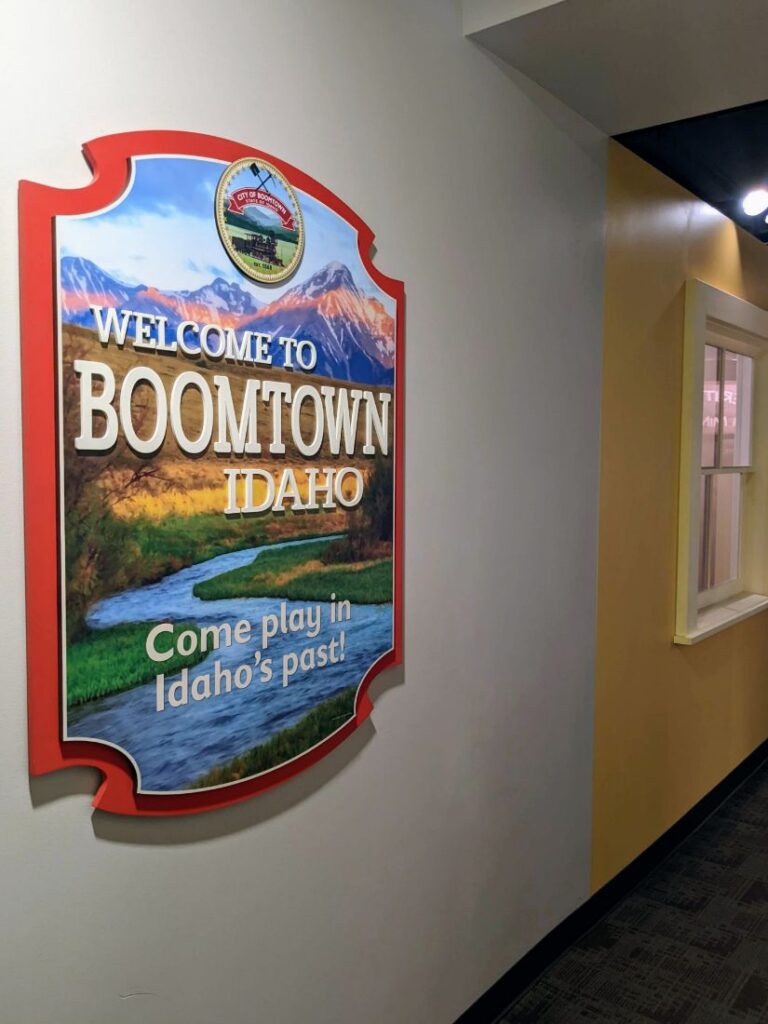
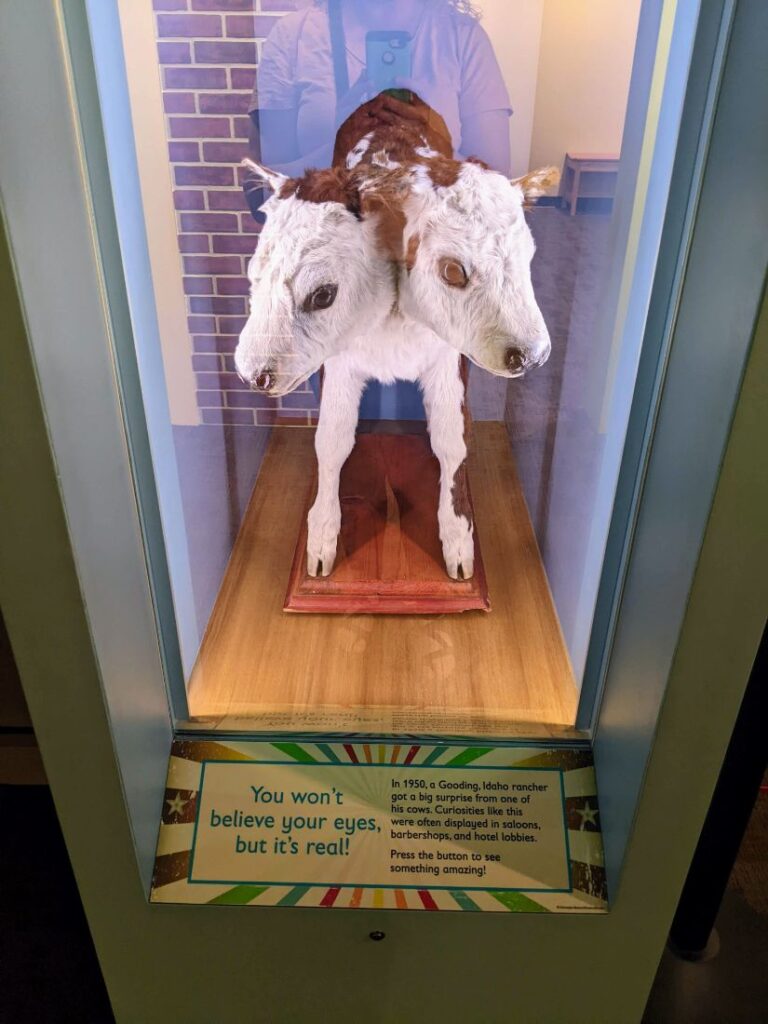
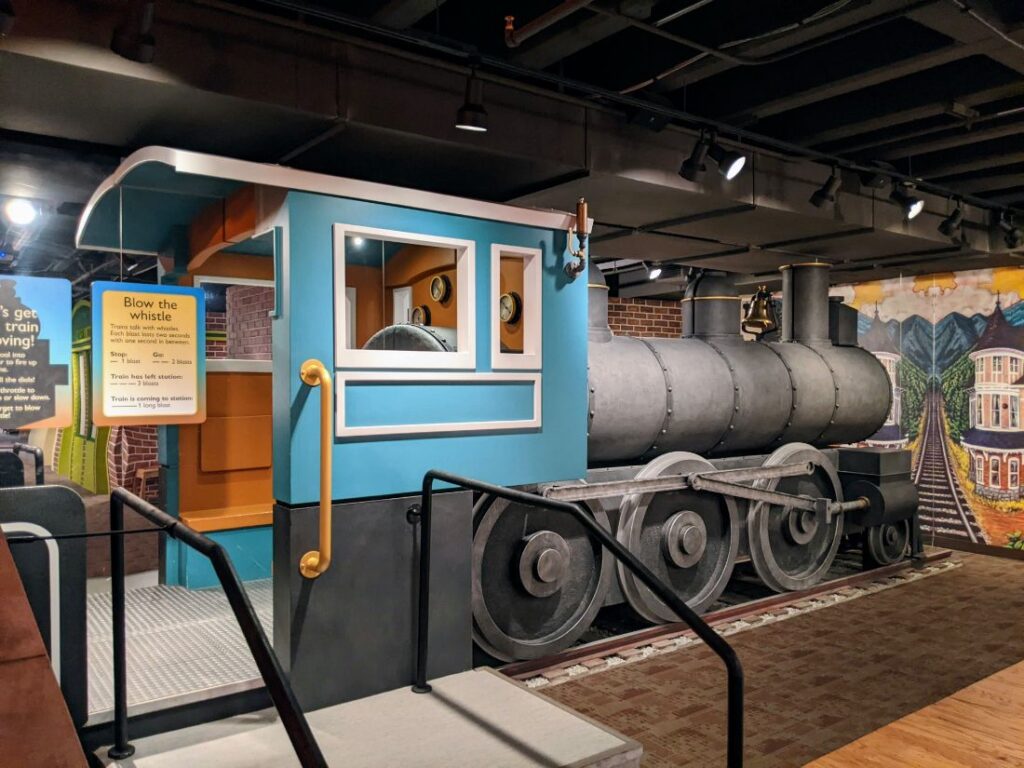
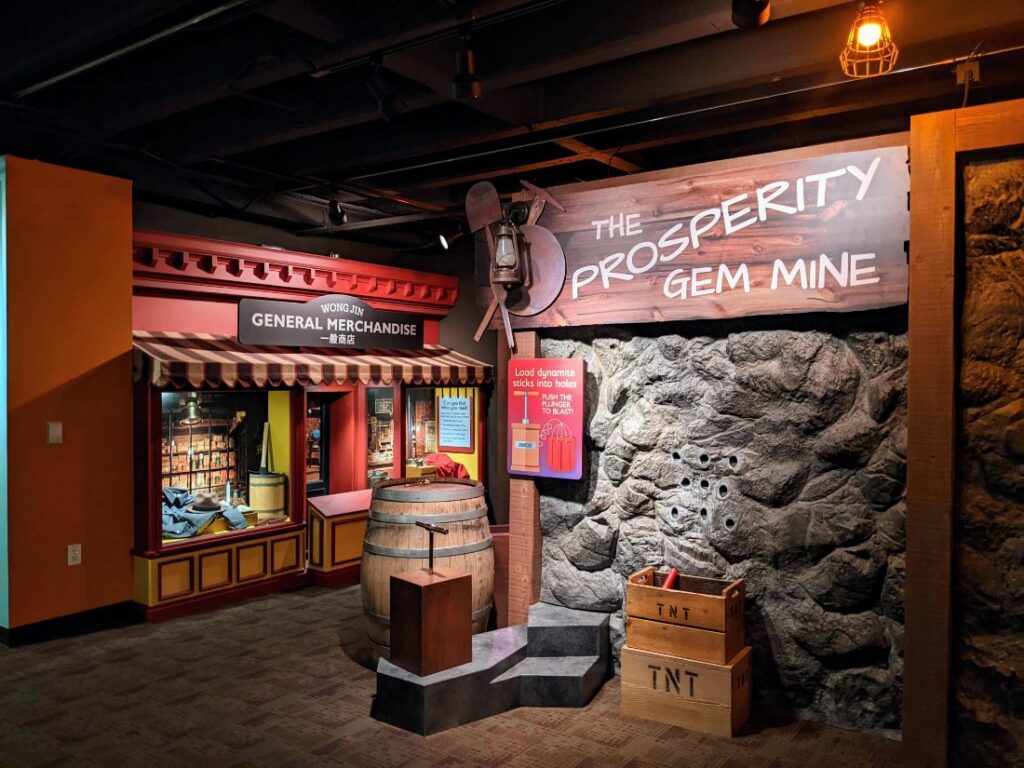
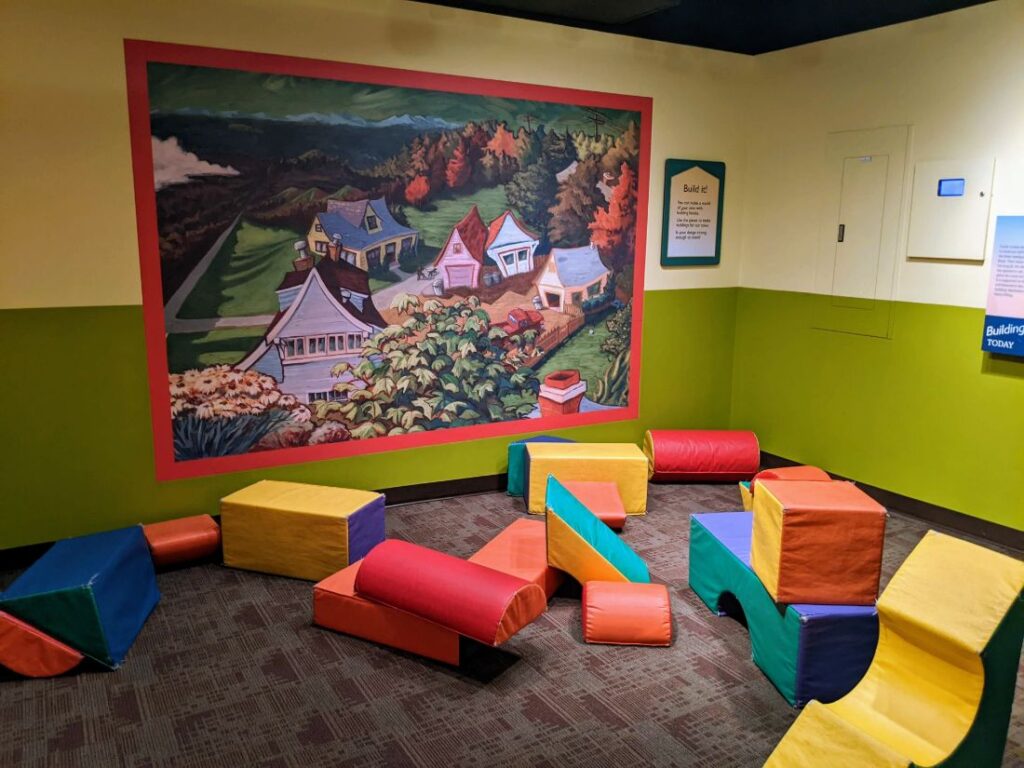
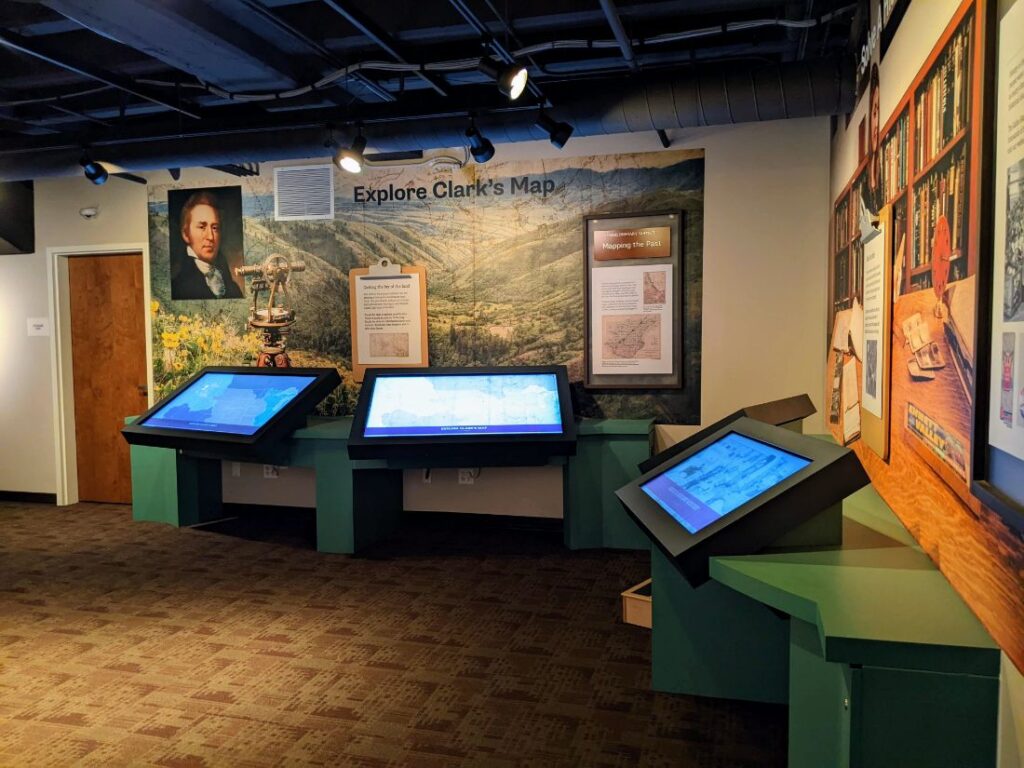
Farther along the hall is the History Lab, a room with touch stations where you can build your own period home, look through historical pictures, and explore the history of Idaho’s past.
The biggest room on the bottom floor is called Stories from Idaho. It’s a collection representing real people who lived in Idaho and each station has a push-button speaker to hear some aspect of their story. Some are family stories, some are about Idaho businesses, and some are more famous, like Paul Revere & the Raiders. Be sure not to miss the gallery in the hall outside this room.
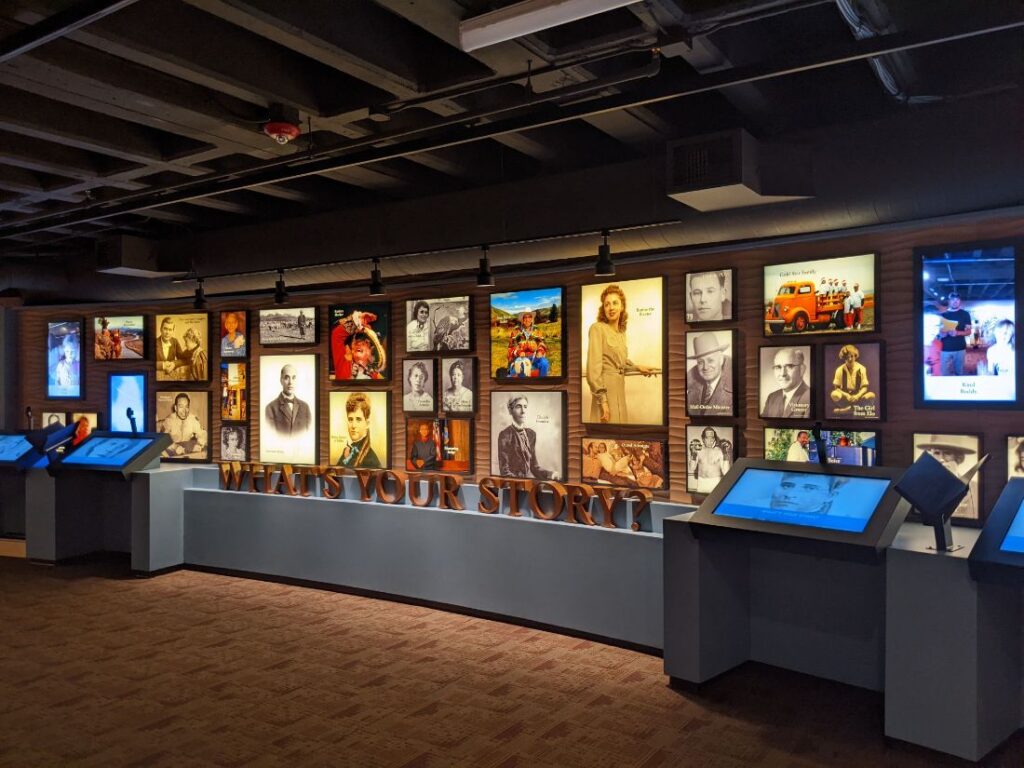
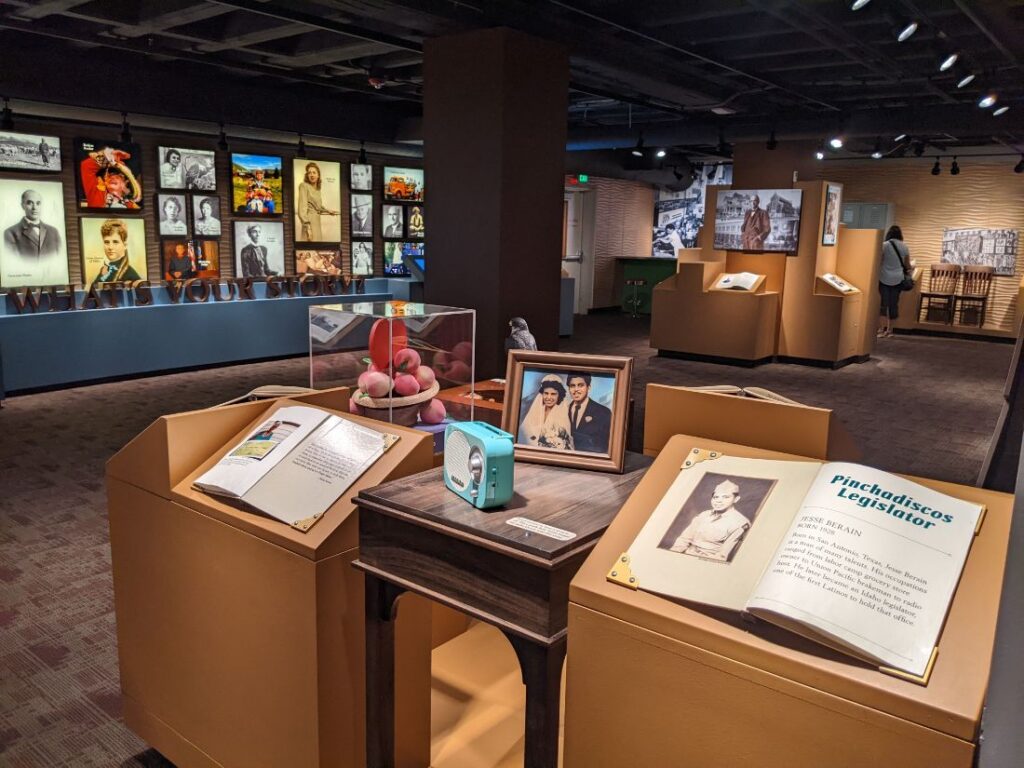
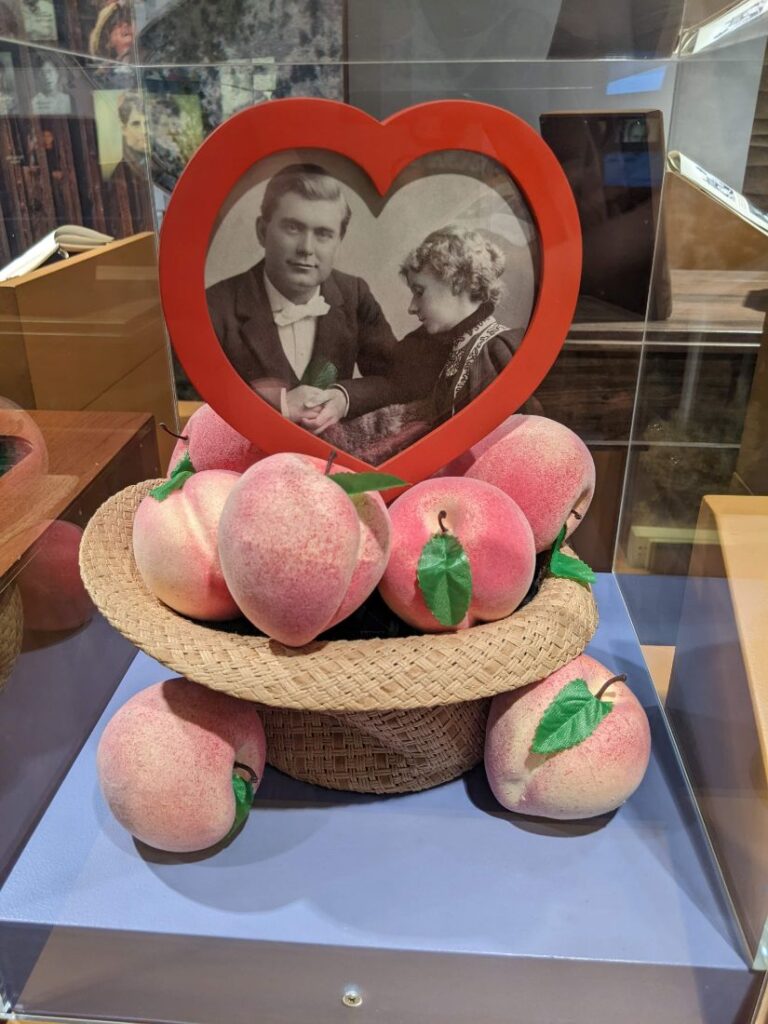
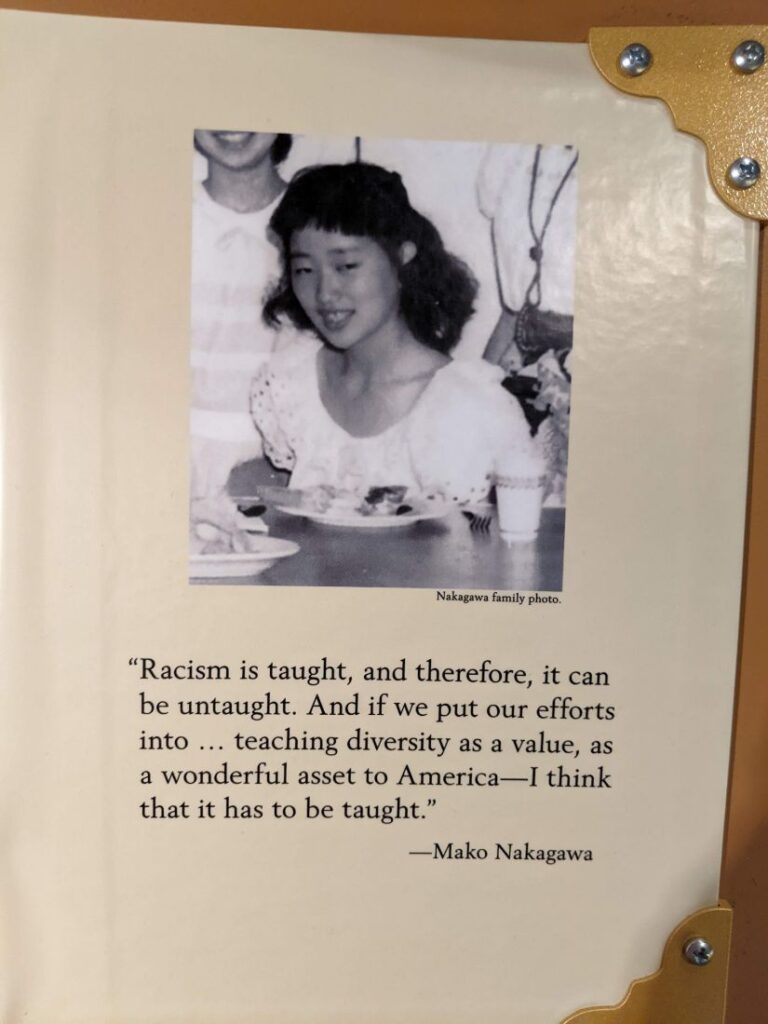
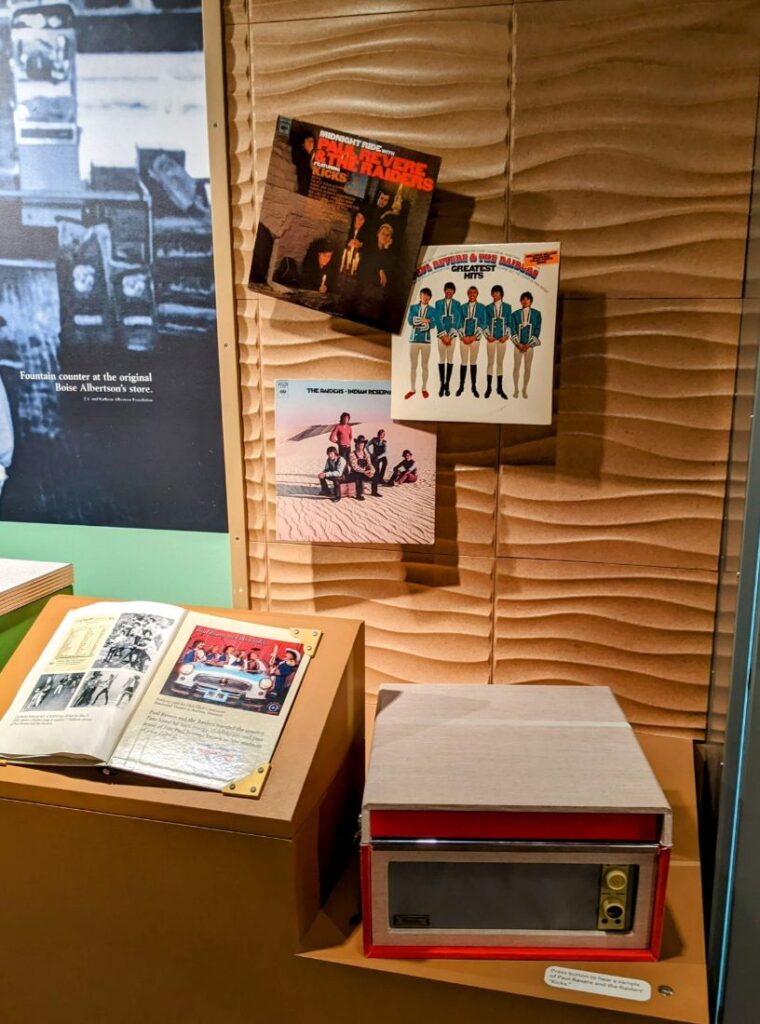
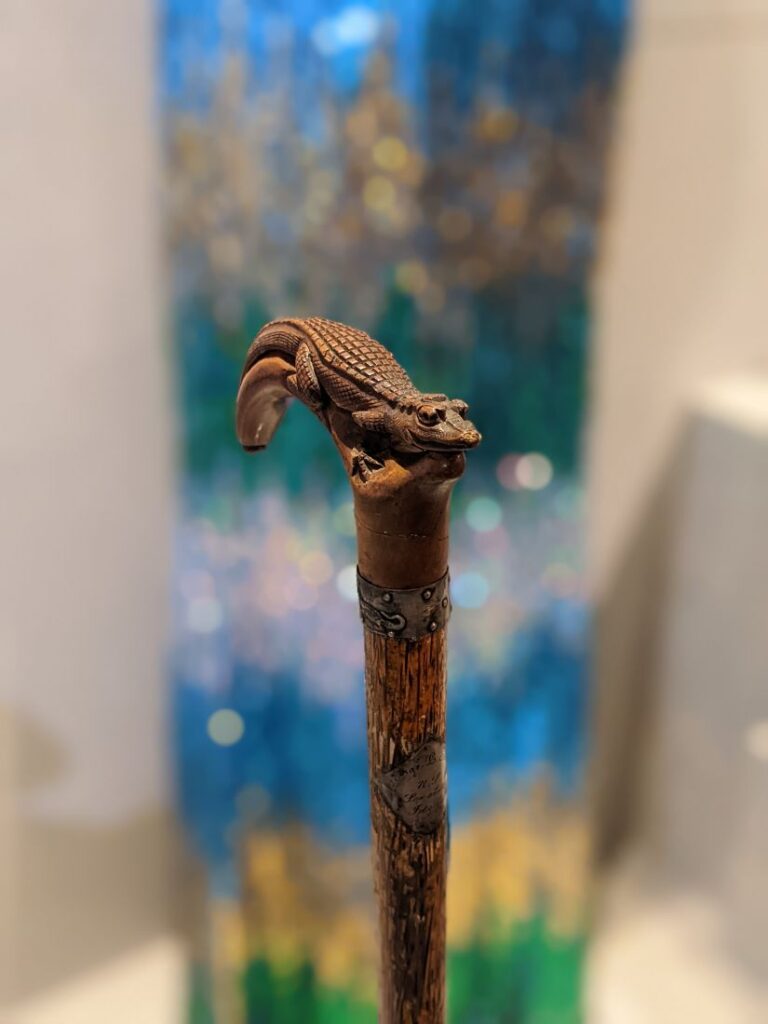
Outdoor Space
There is an outdoor space behind the Idaho State Museum, but either I missed the entrance to it, or accidentally skipped it because I was running out of time. But maybe they only open it for special occasions because I never saw anyone else out there either.
This area seems to hold some original buildings from Boise, plus a large picnic space.
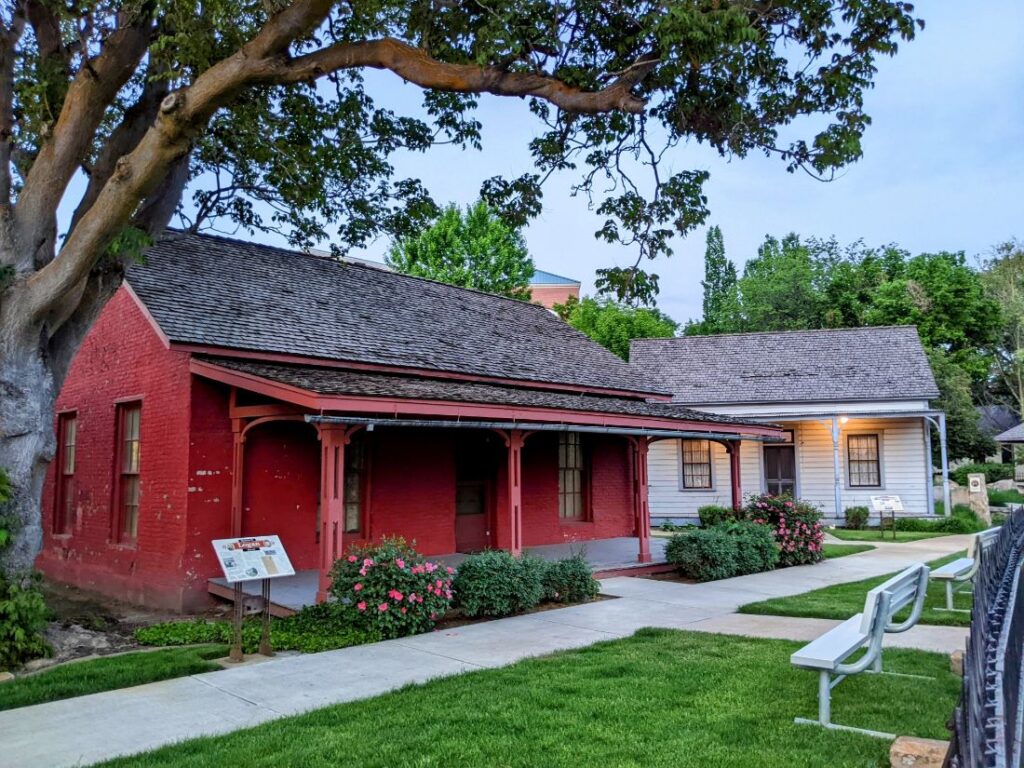
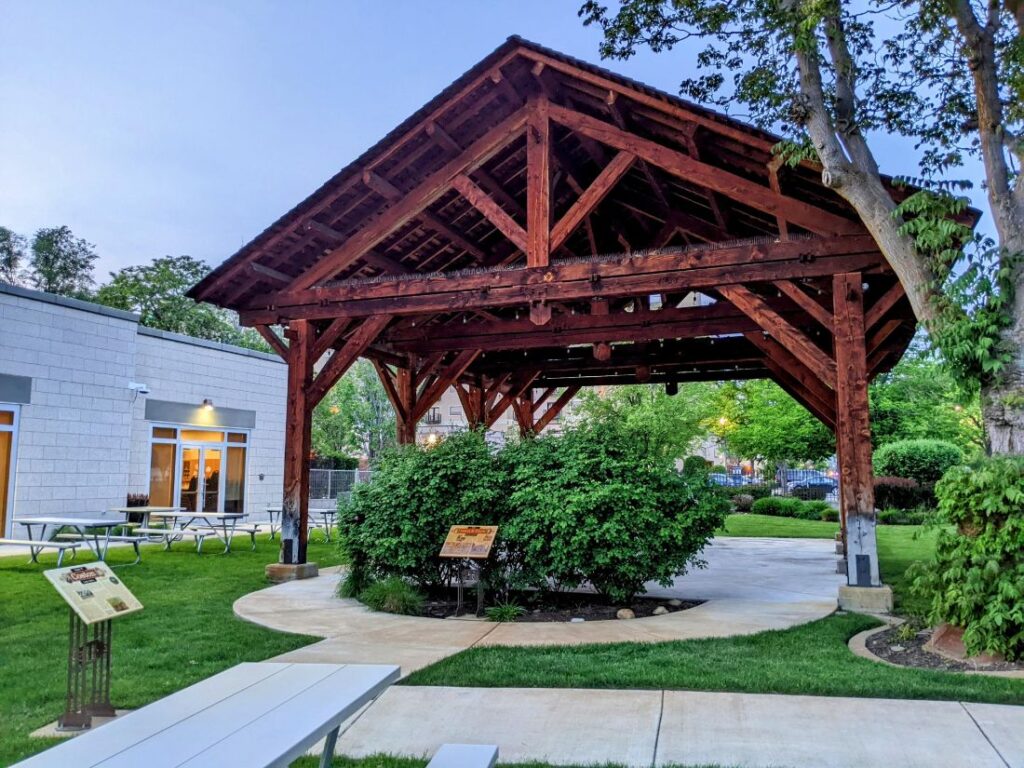
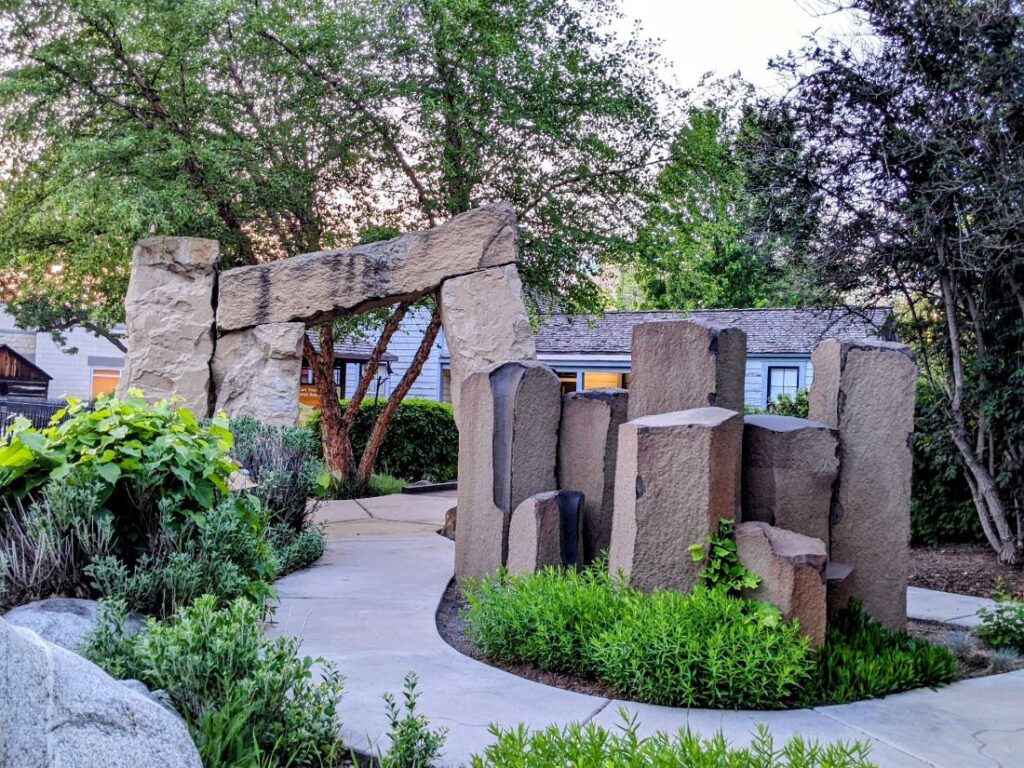
Admission & Hours
If you want to visit the Idaho State Museum yourself, you can do so from 10 am-5 pm Monday-Saturday and noon-5 pm on Sundays. They’re open noon-5 pm on Memorial Day, Labor Day, President’s Day, Veteran’s Day, and Easter. And they’re closed Martin Luther King Jr. Day, Juneteenth, Fourth of July, Columbus Day, Thanksgiving, Christmas, and New Year’s Day. Last admission is at 4:15.
Admission is very reasonable at $10 for adults, $8 for seniors 60+, any military members, active or veterans, and college students with ID. Kids 6-17 are $5, and ages 5 and under are free. Look for more discounts under AAA, Museums for All, and the Blue Star Museum program.
Look for Homeschool Days, family nights, and “Winter Wonder Village” nights coming up on the events page.
Be First to Comment